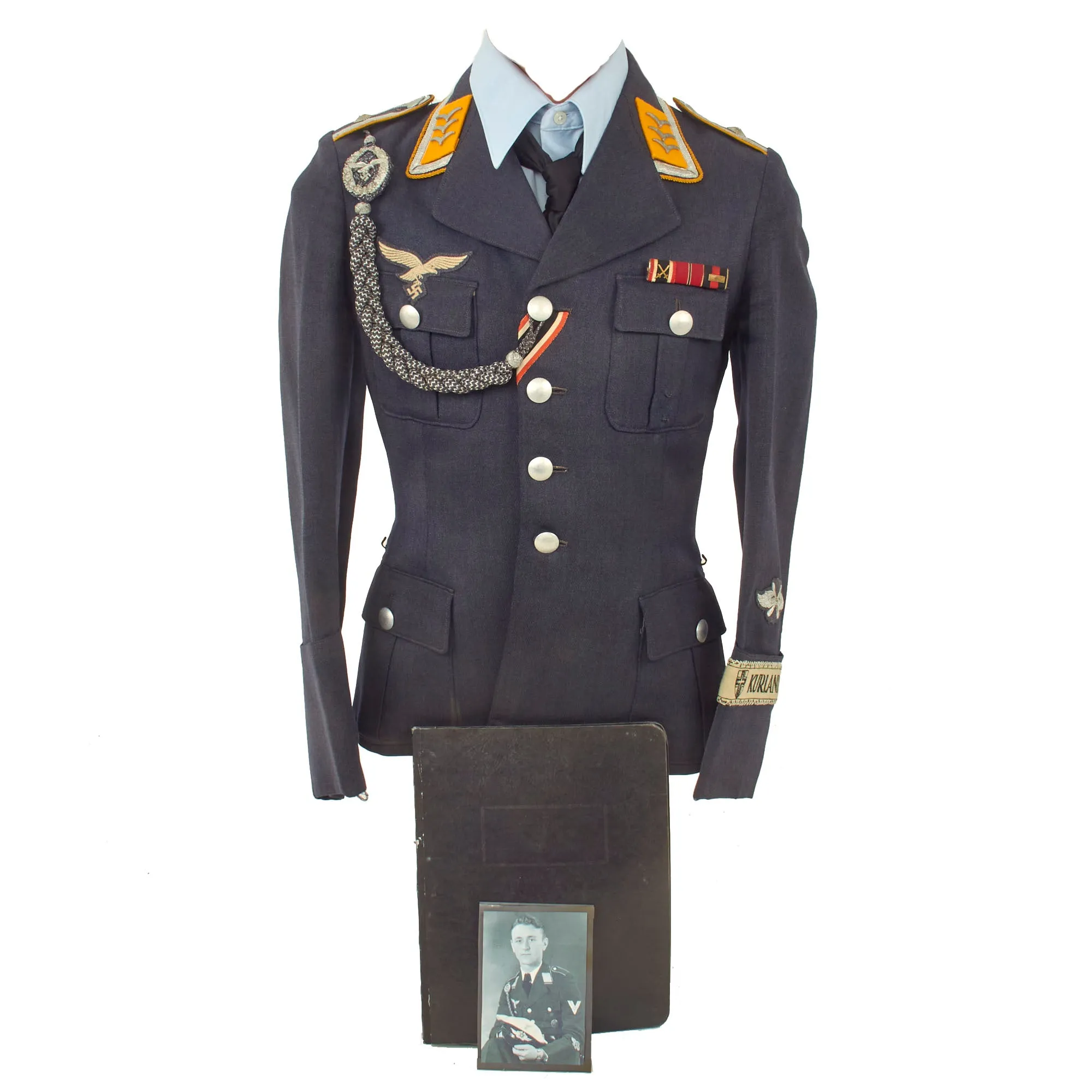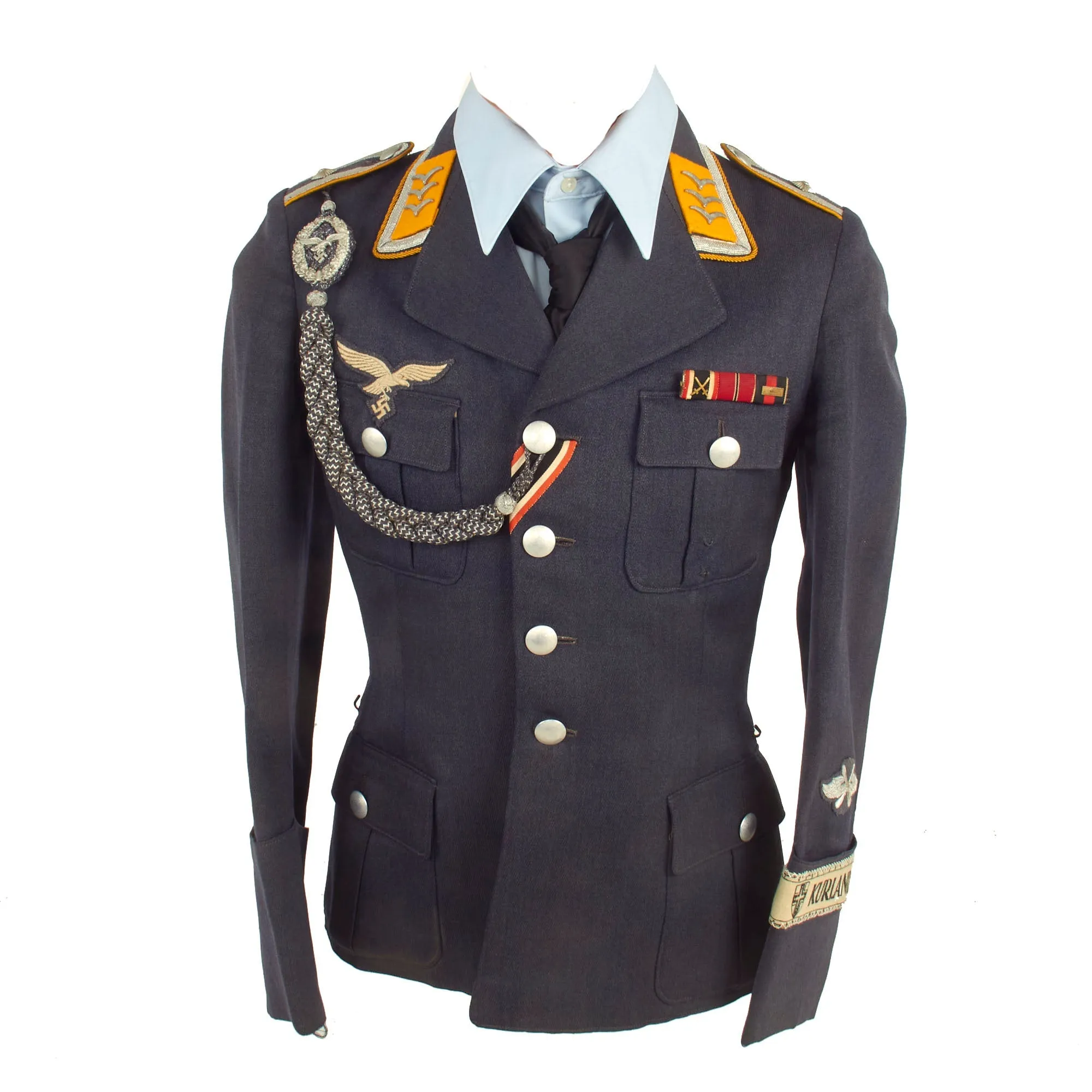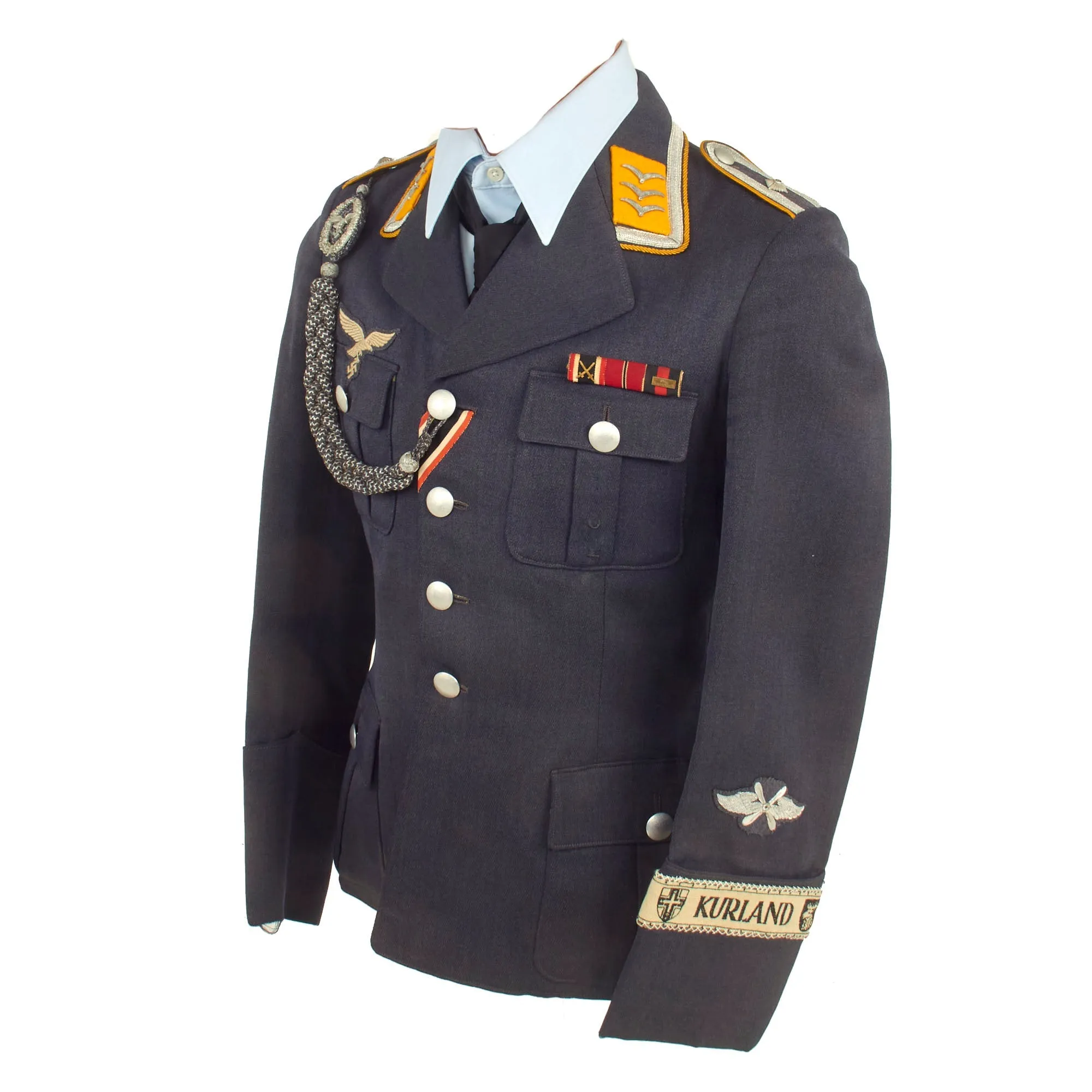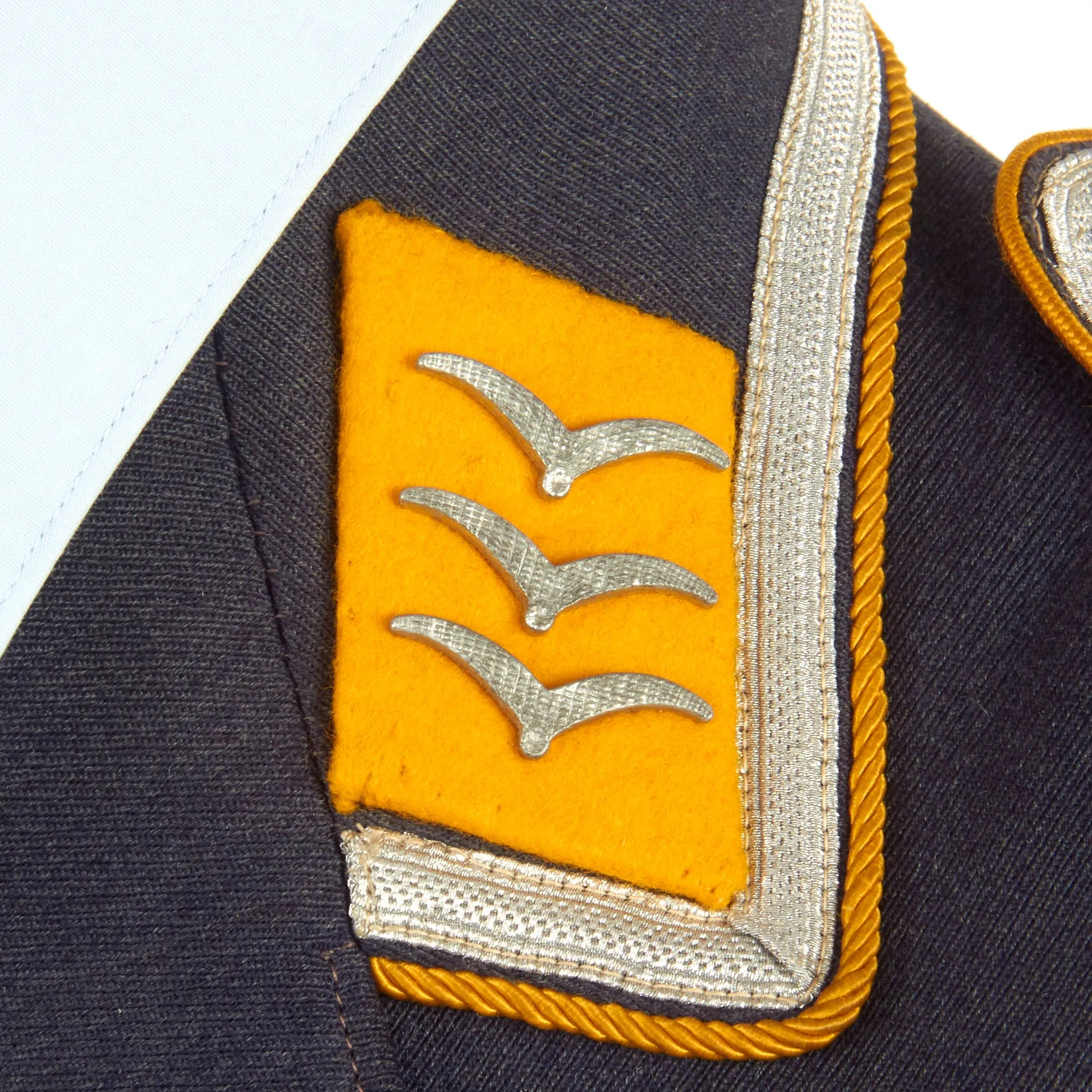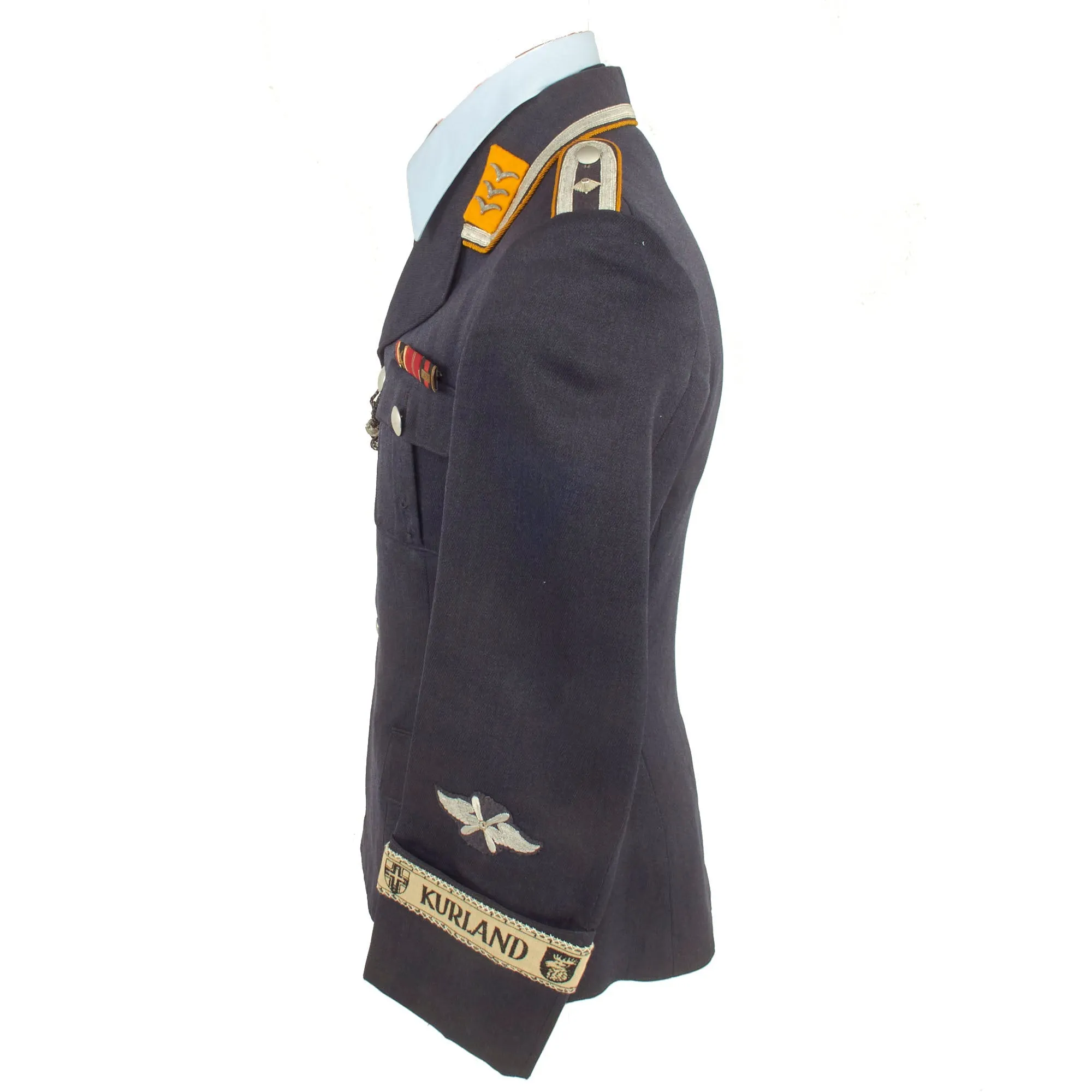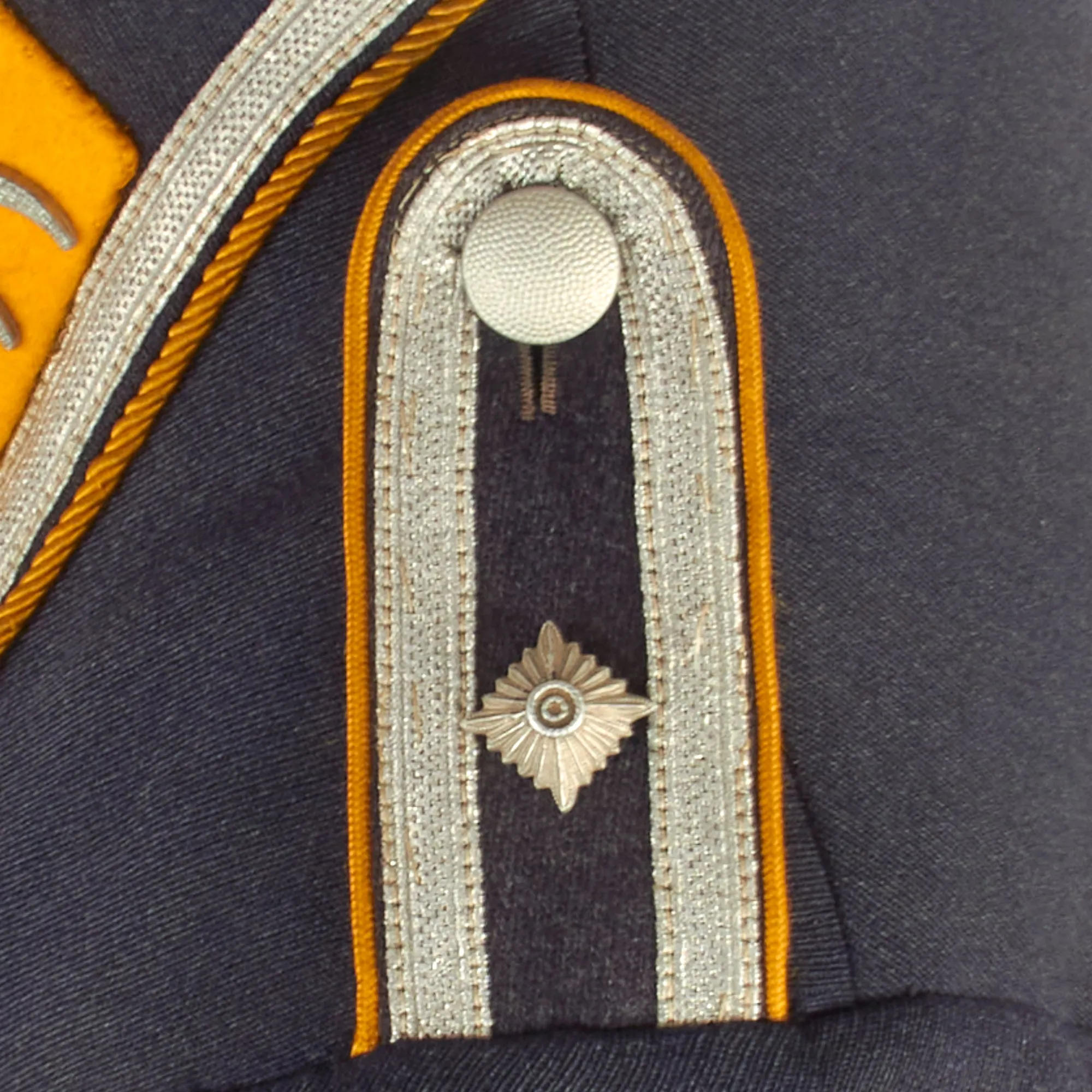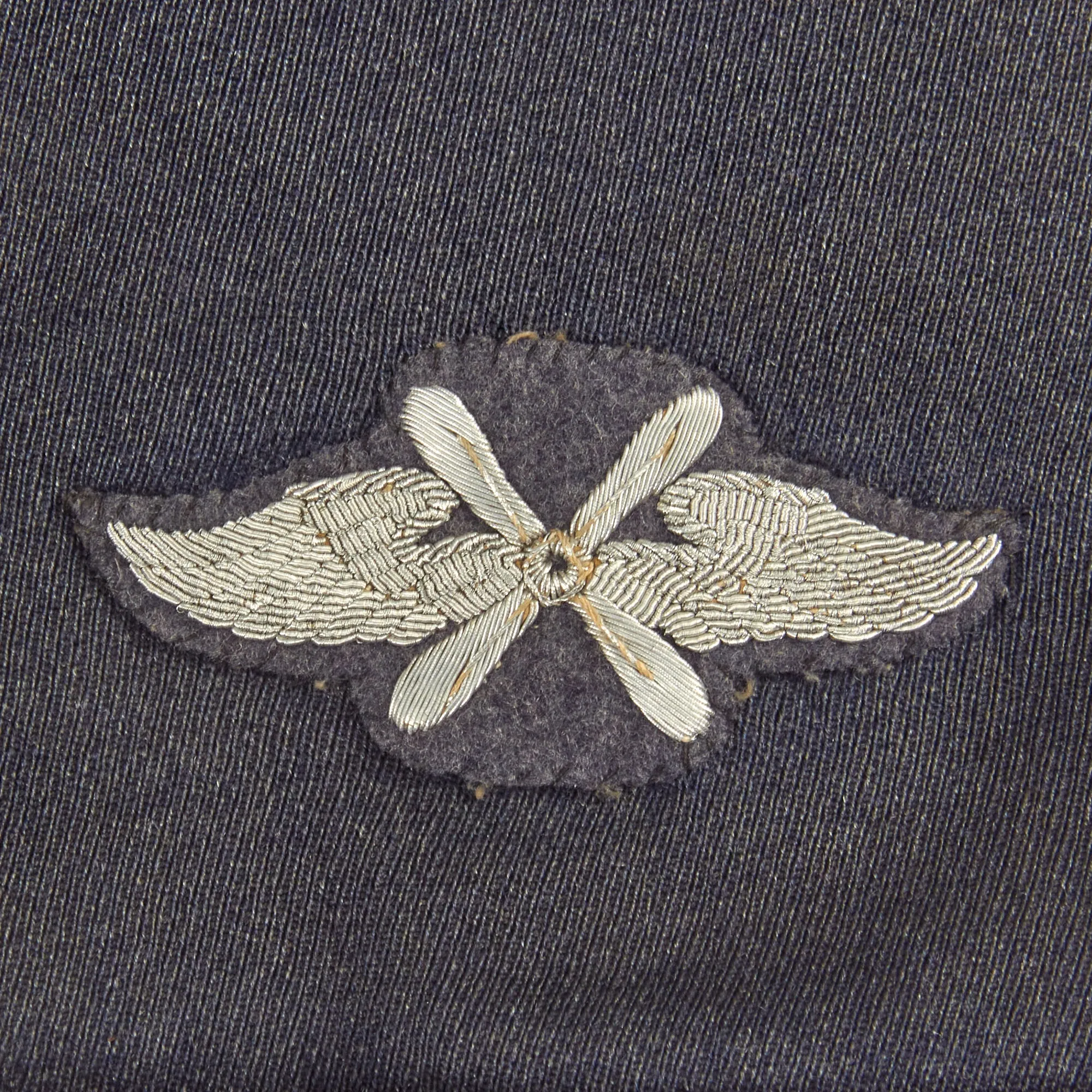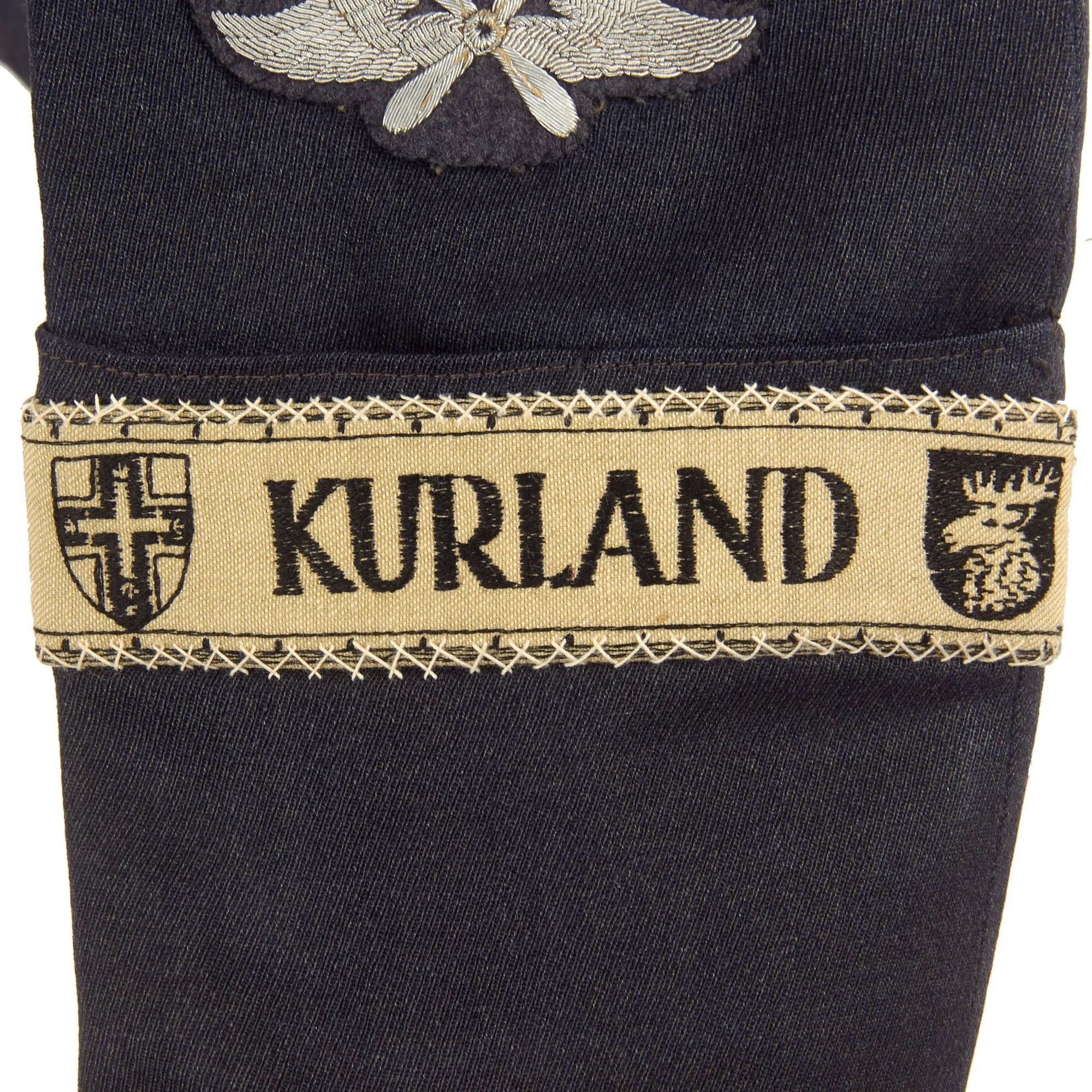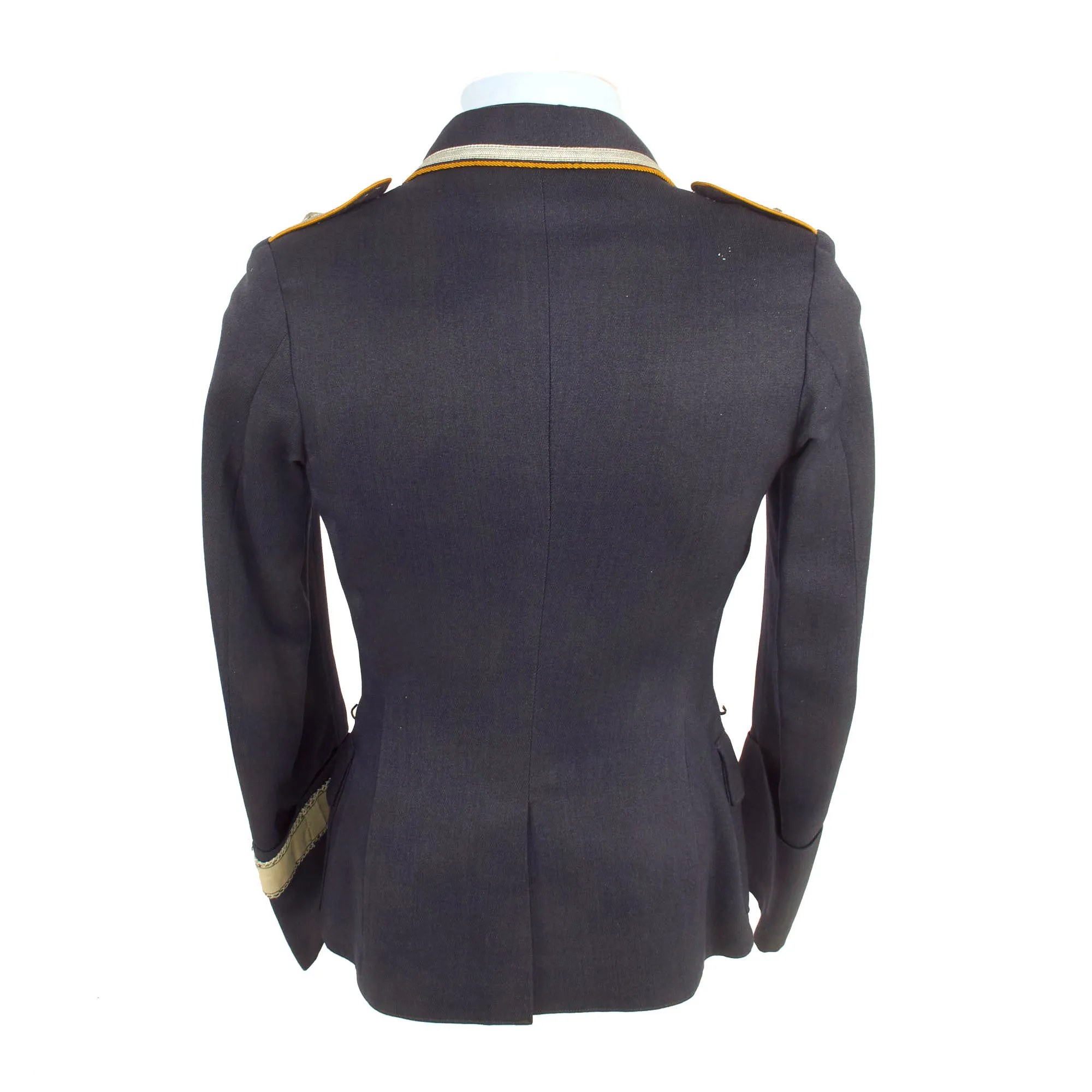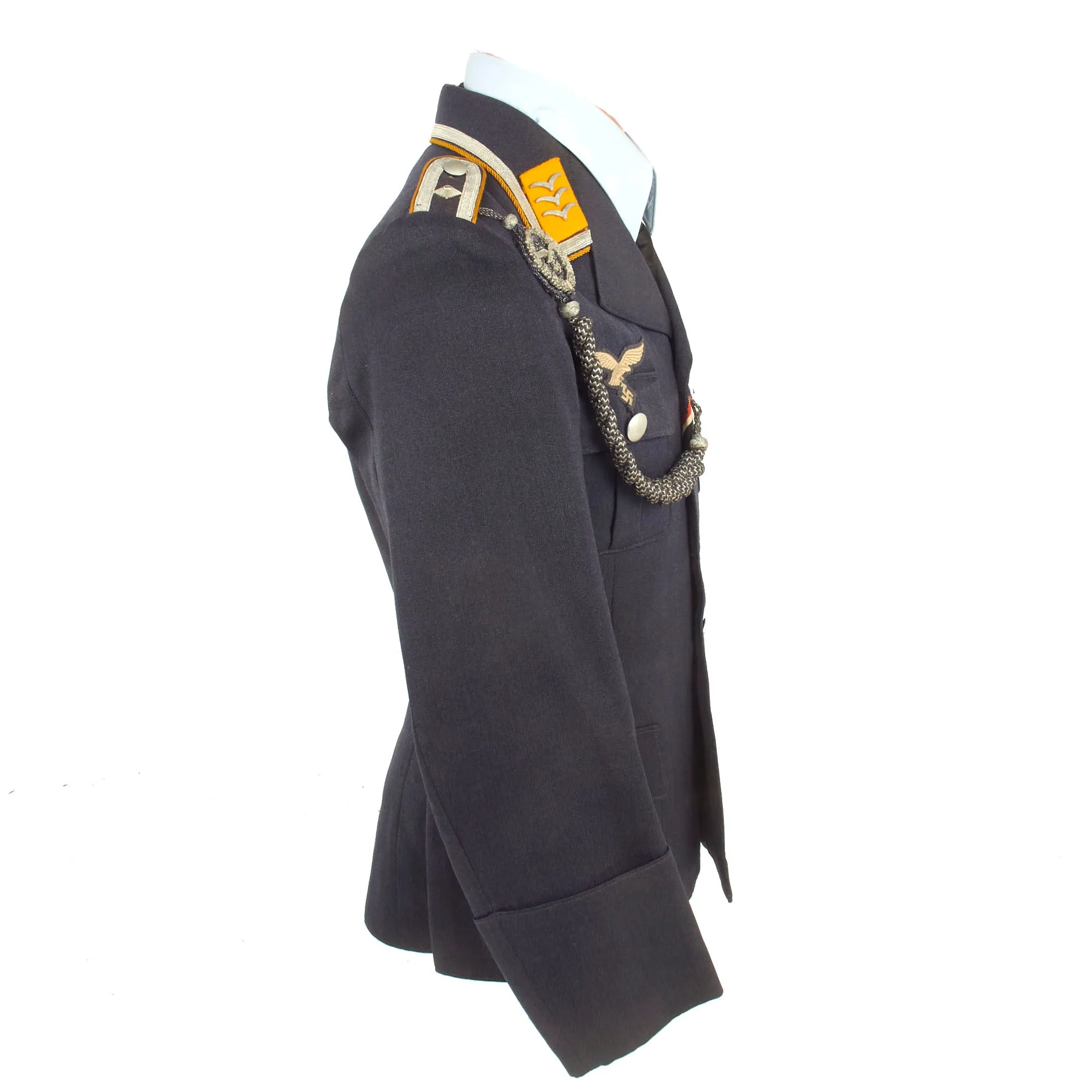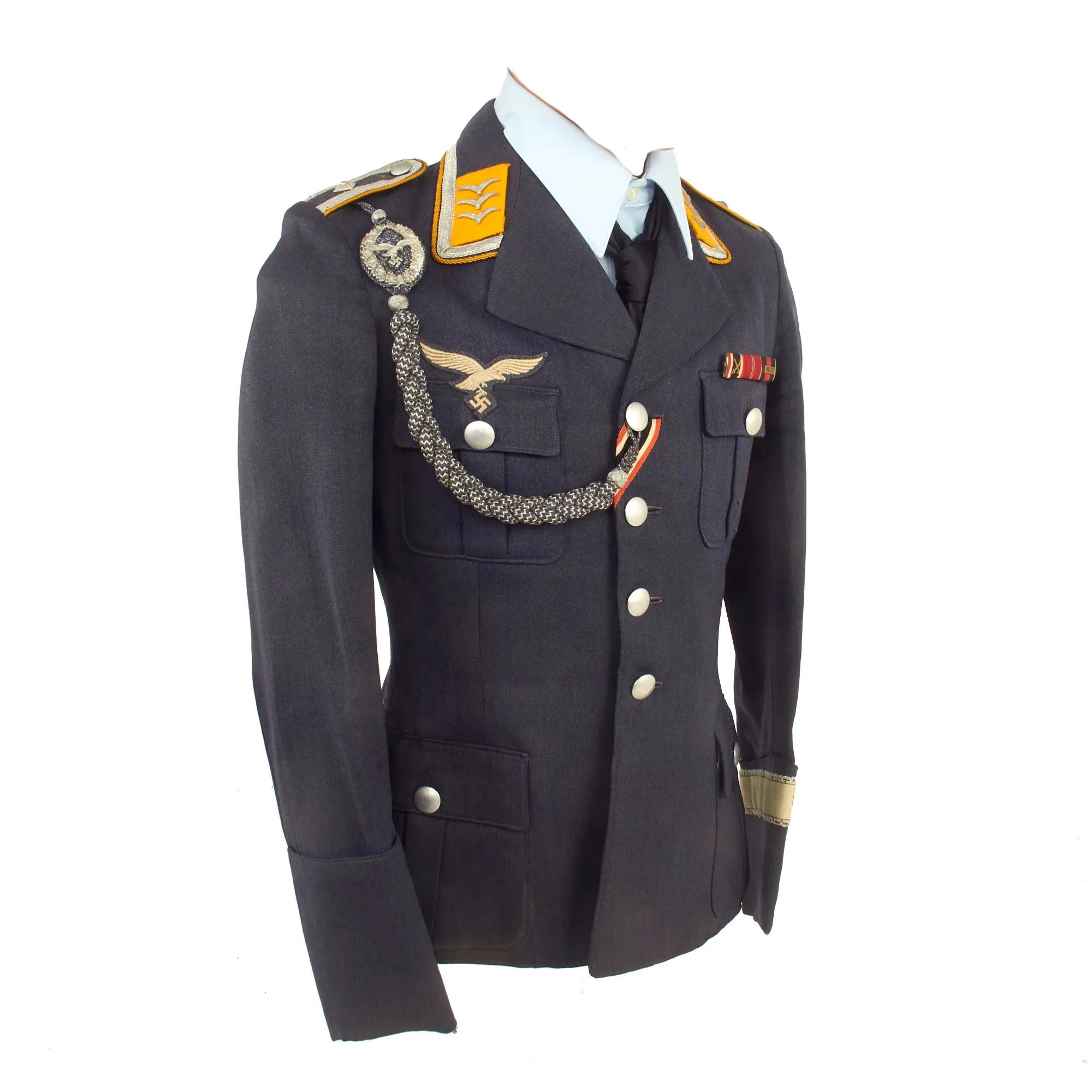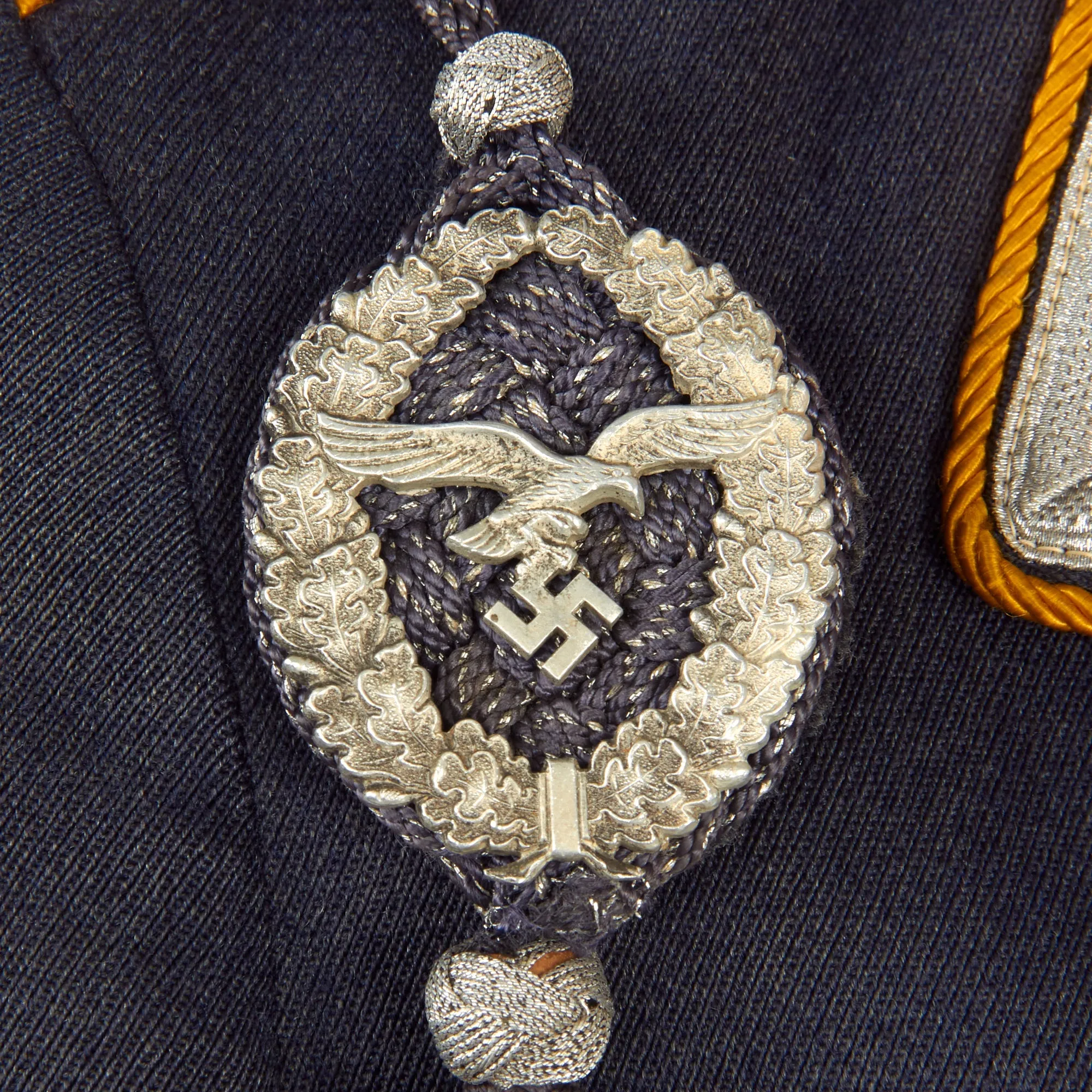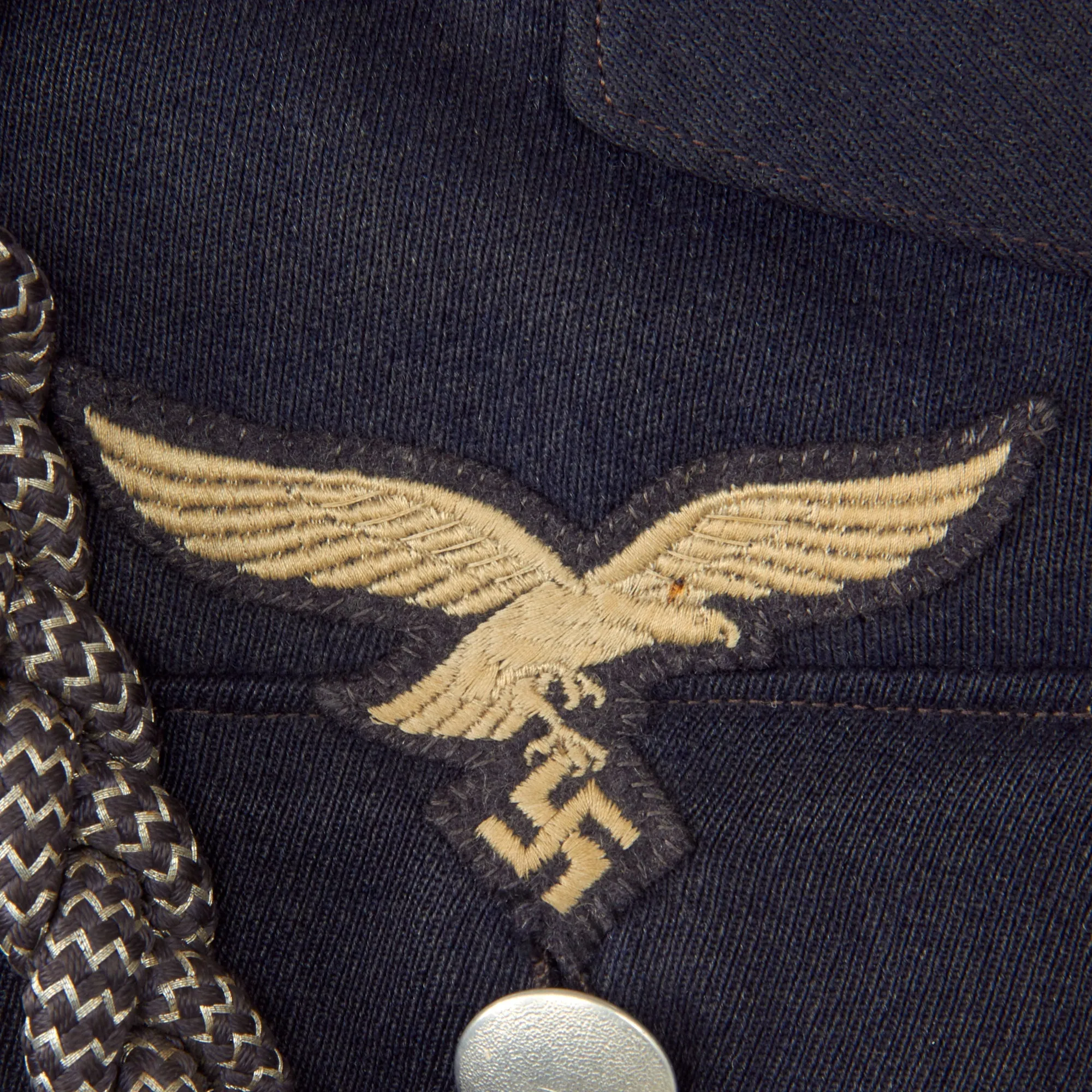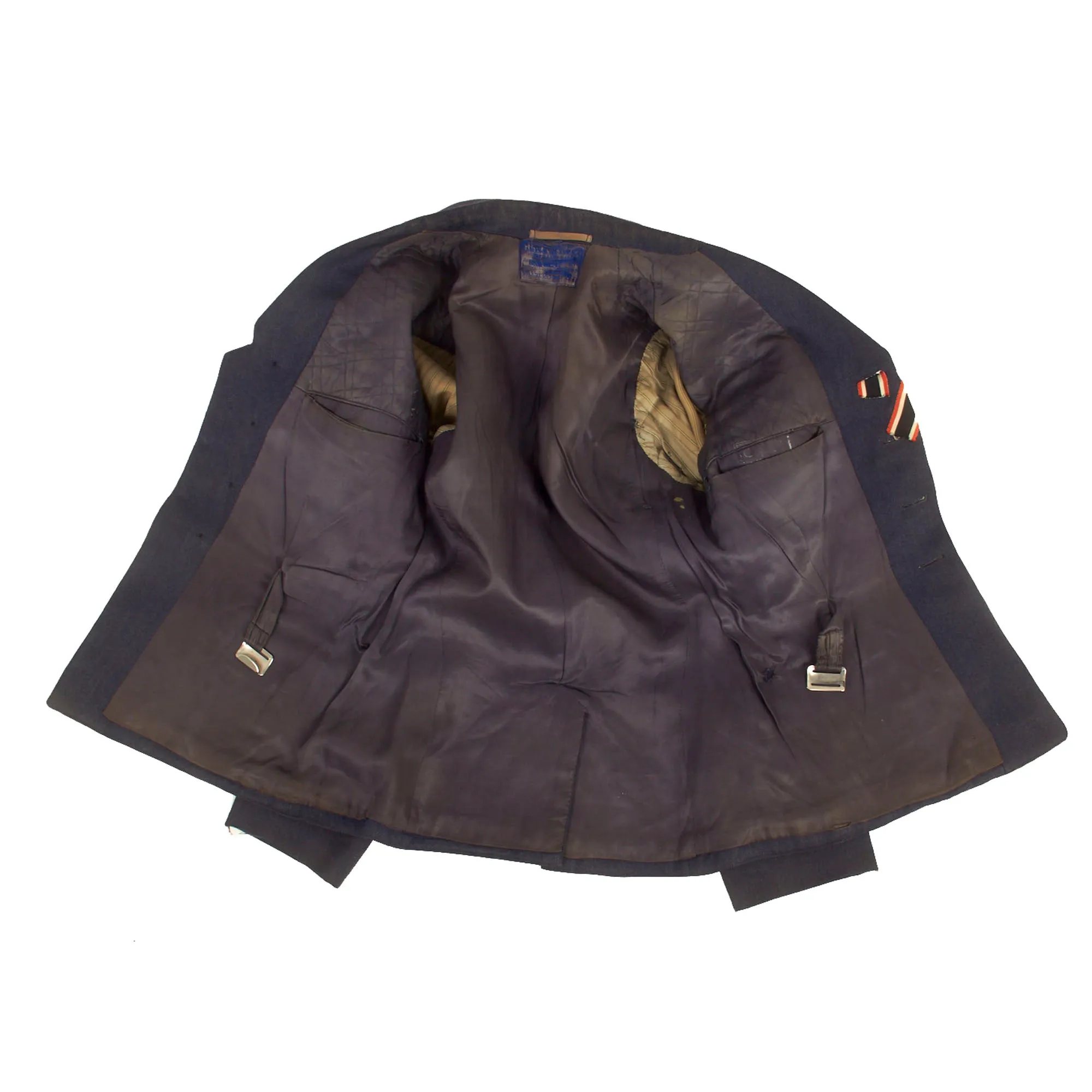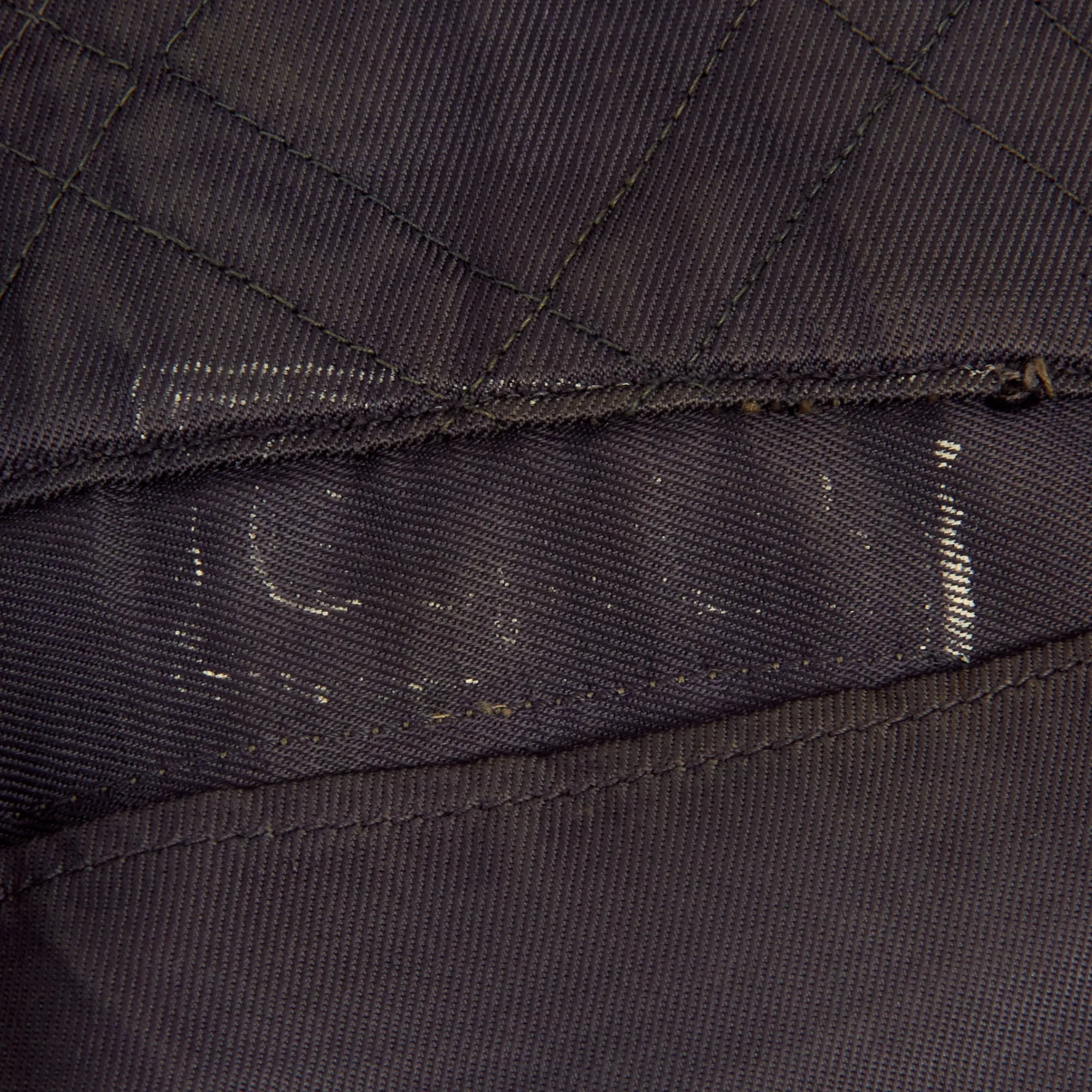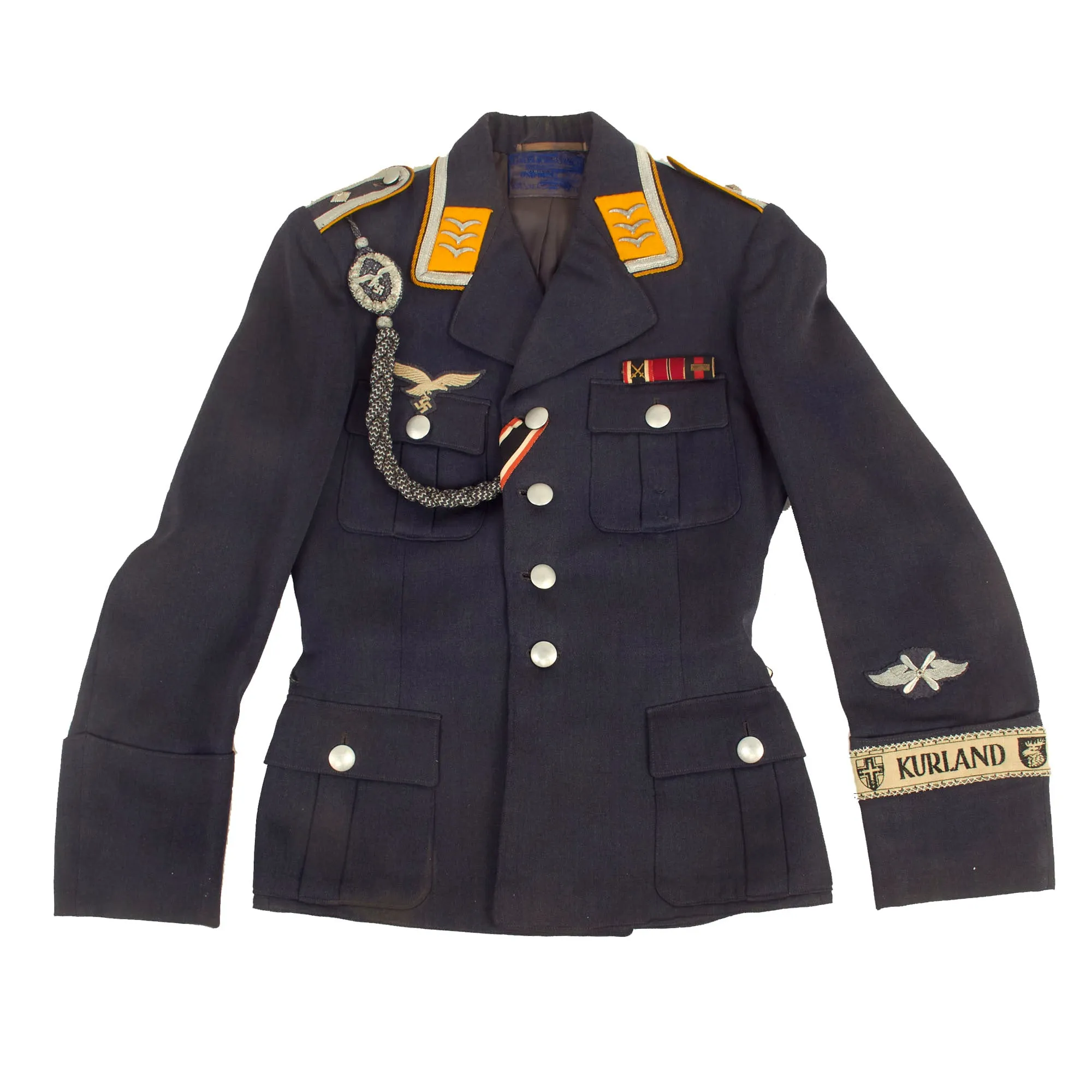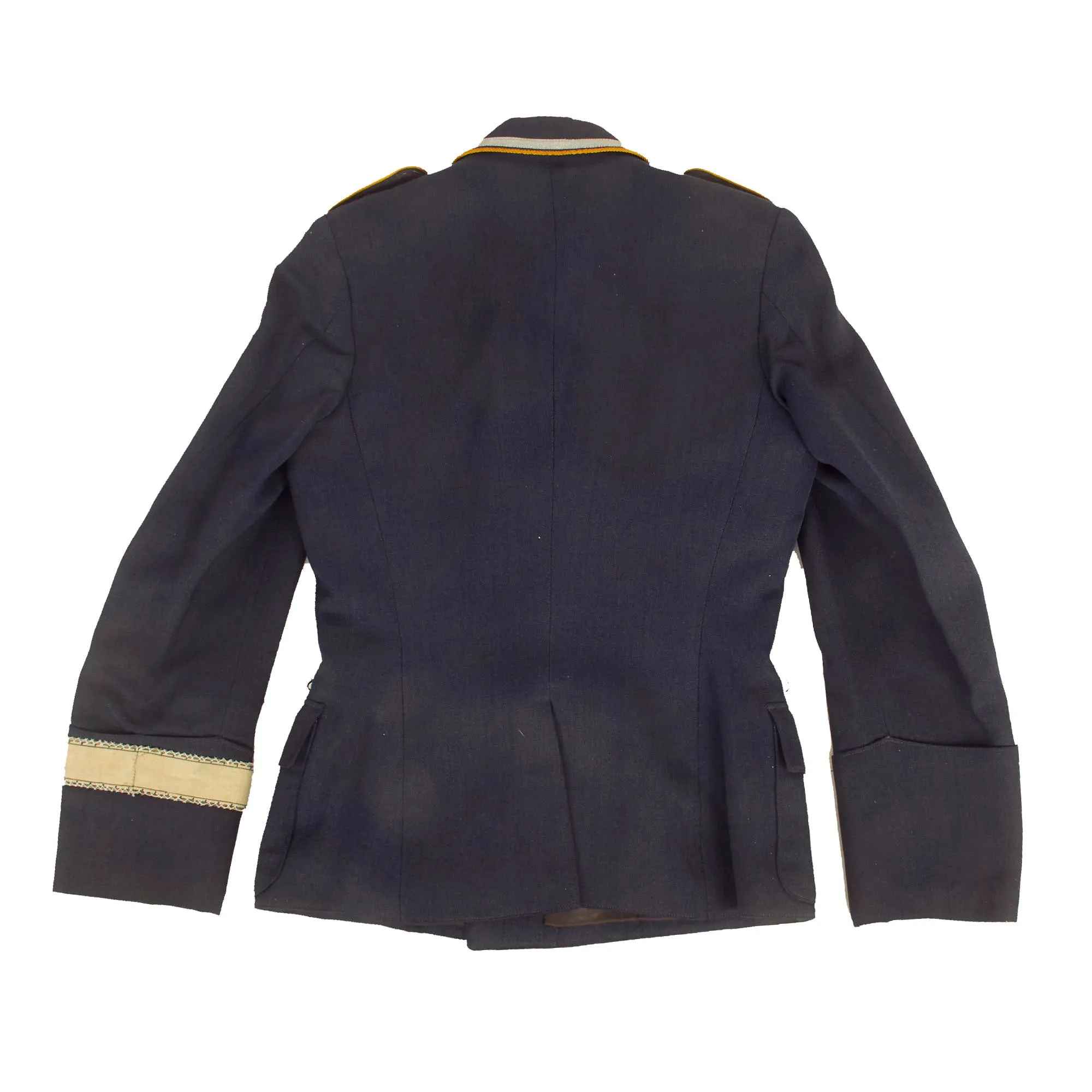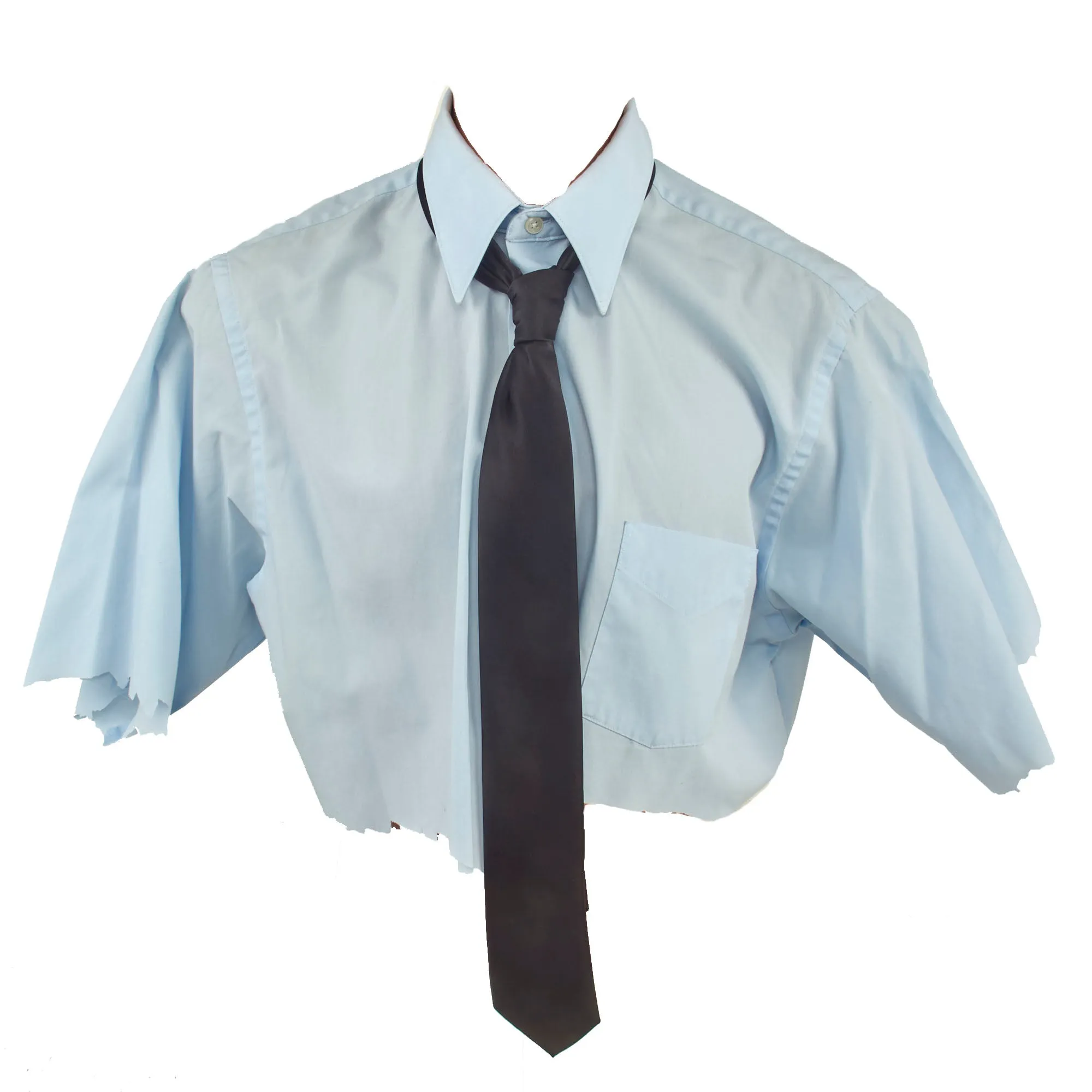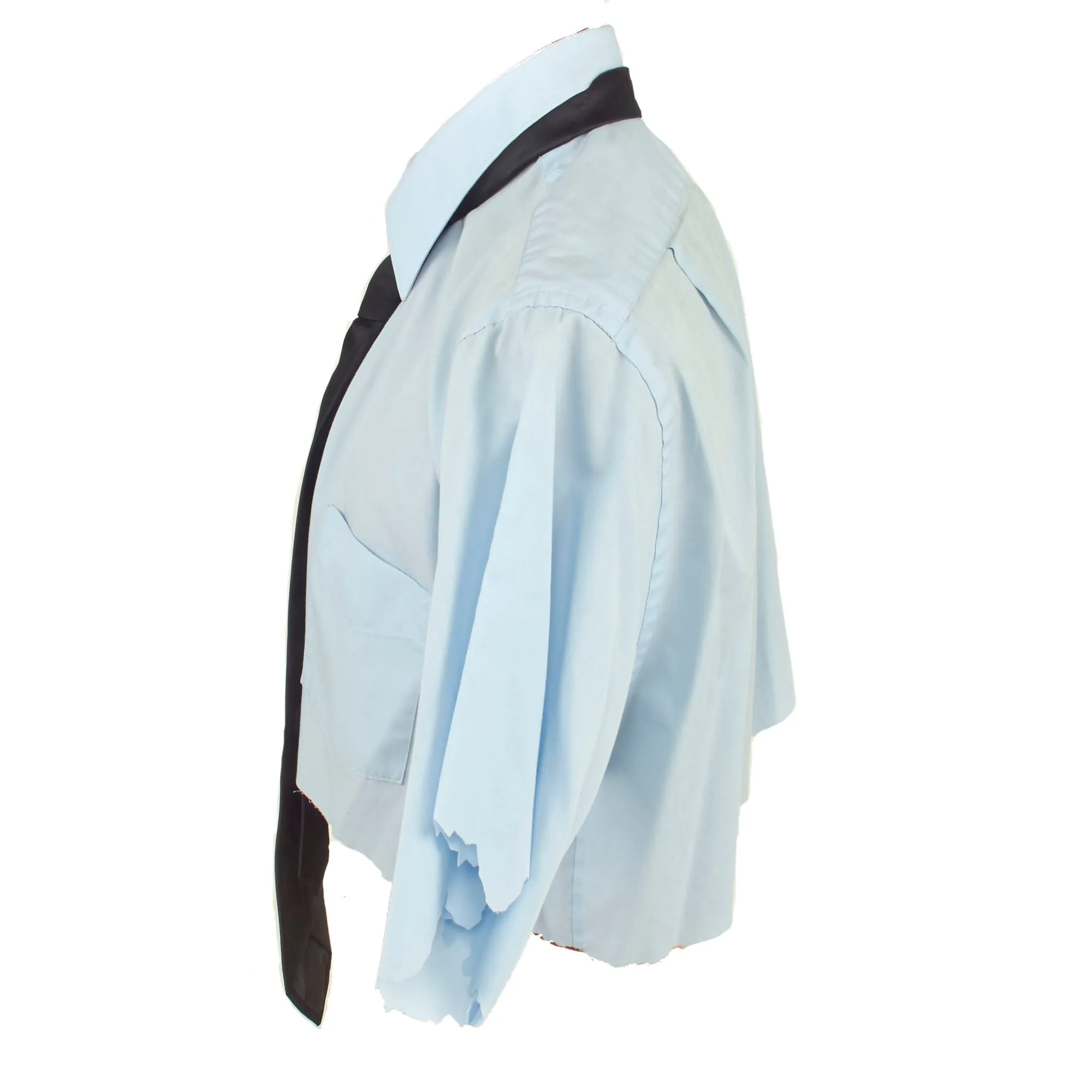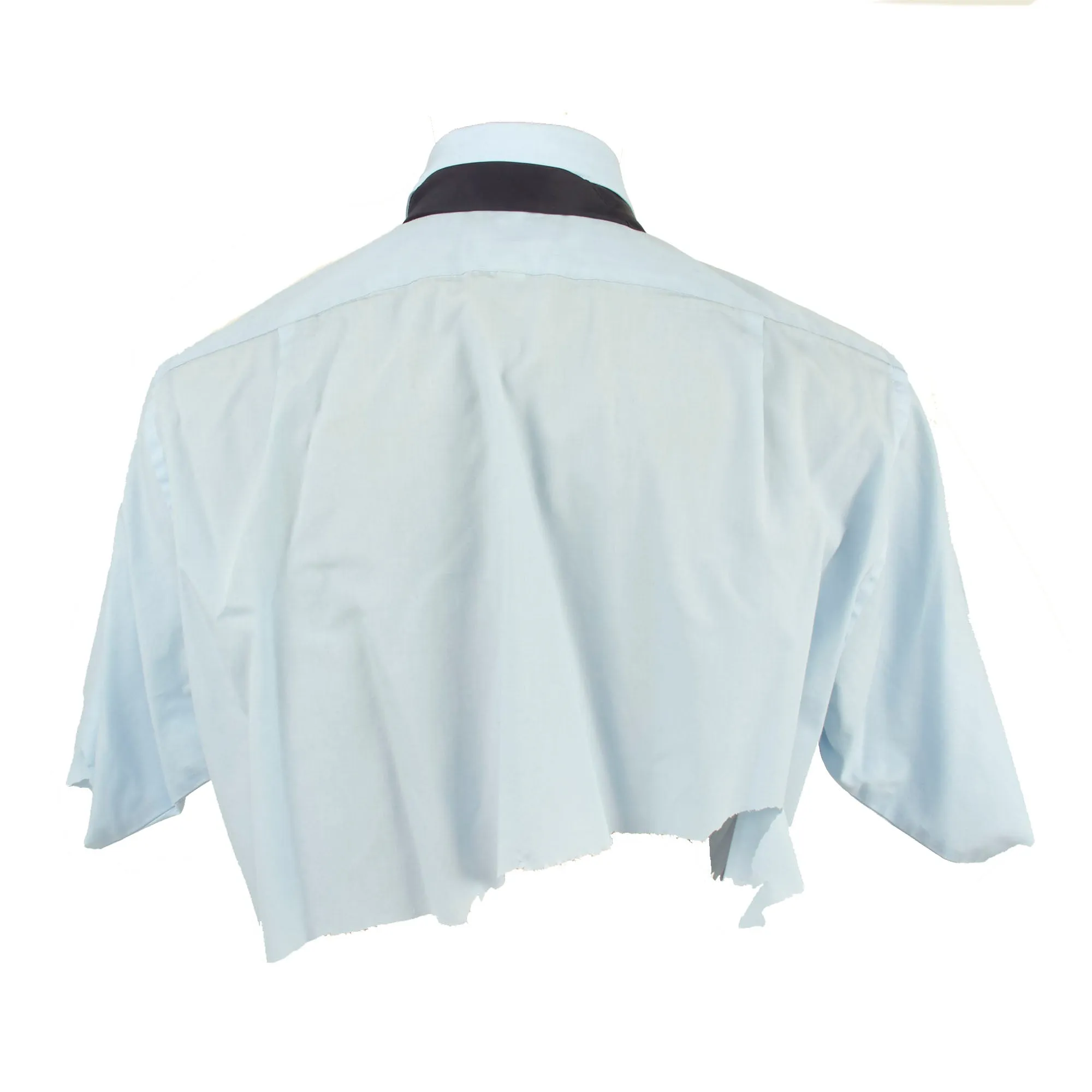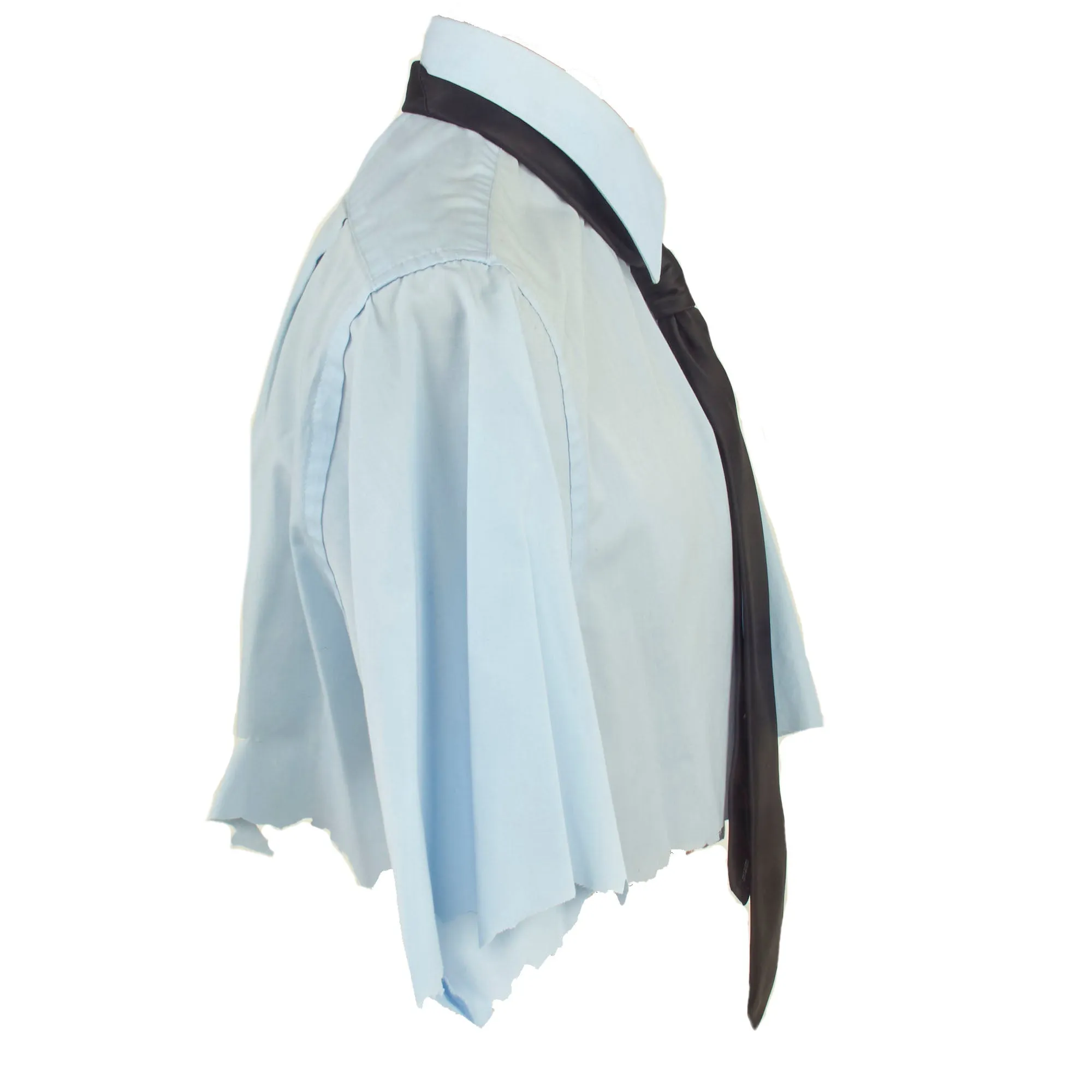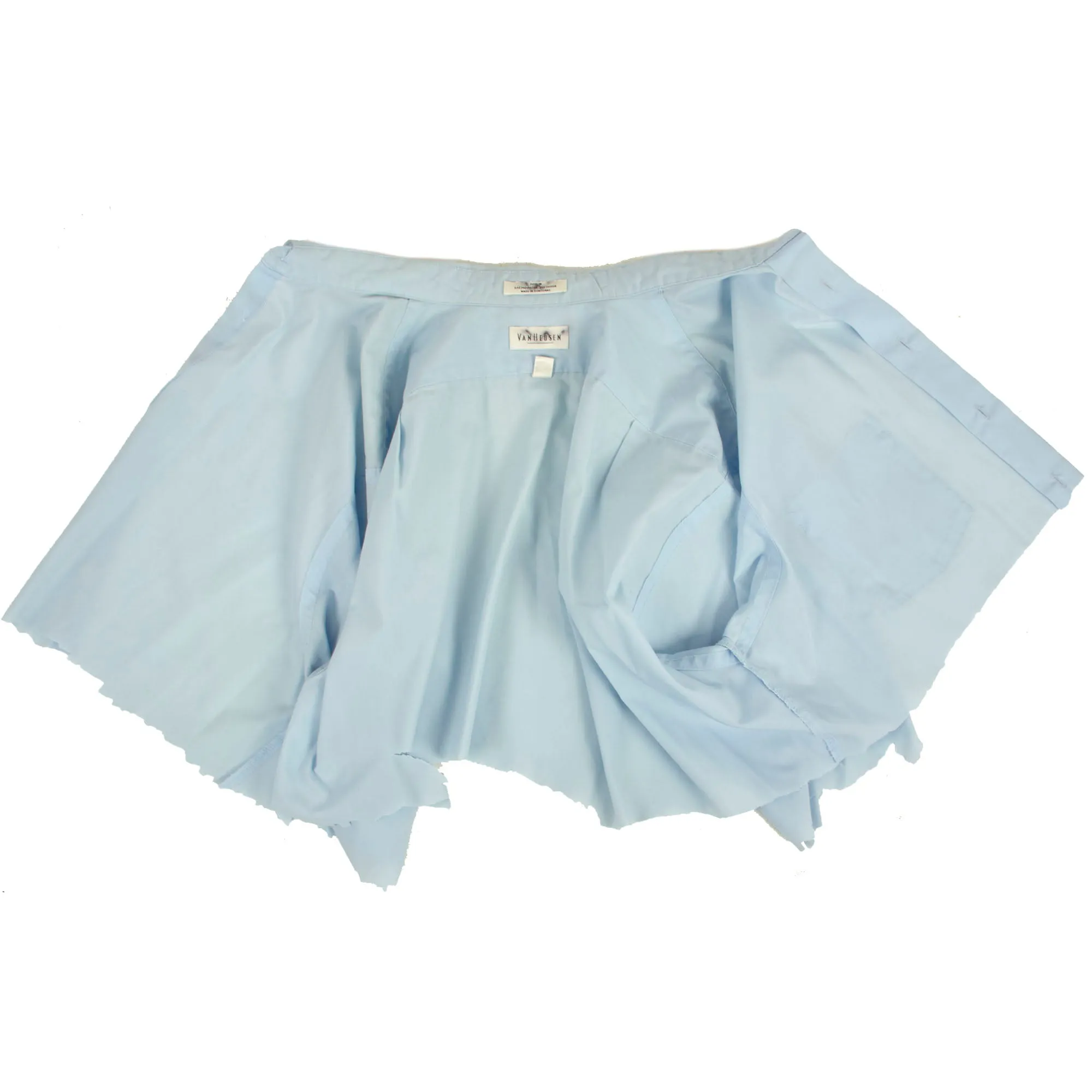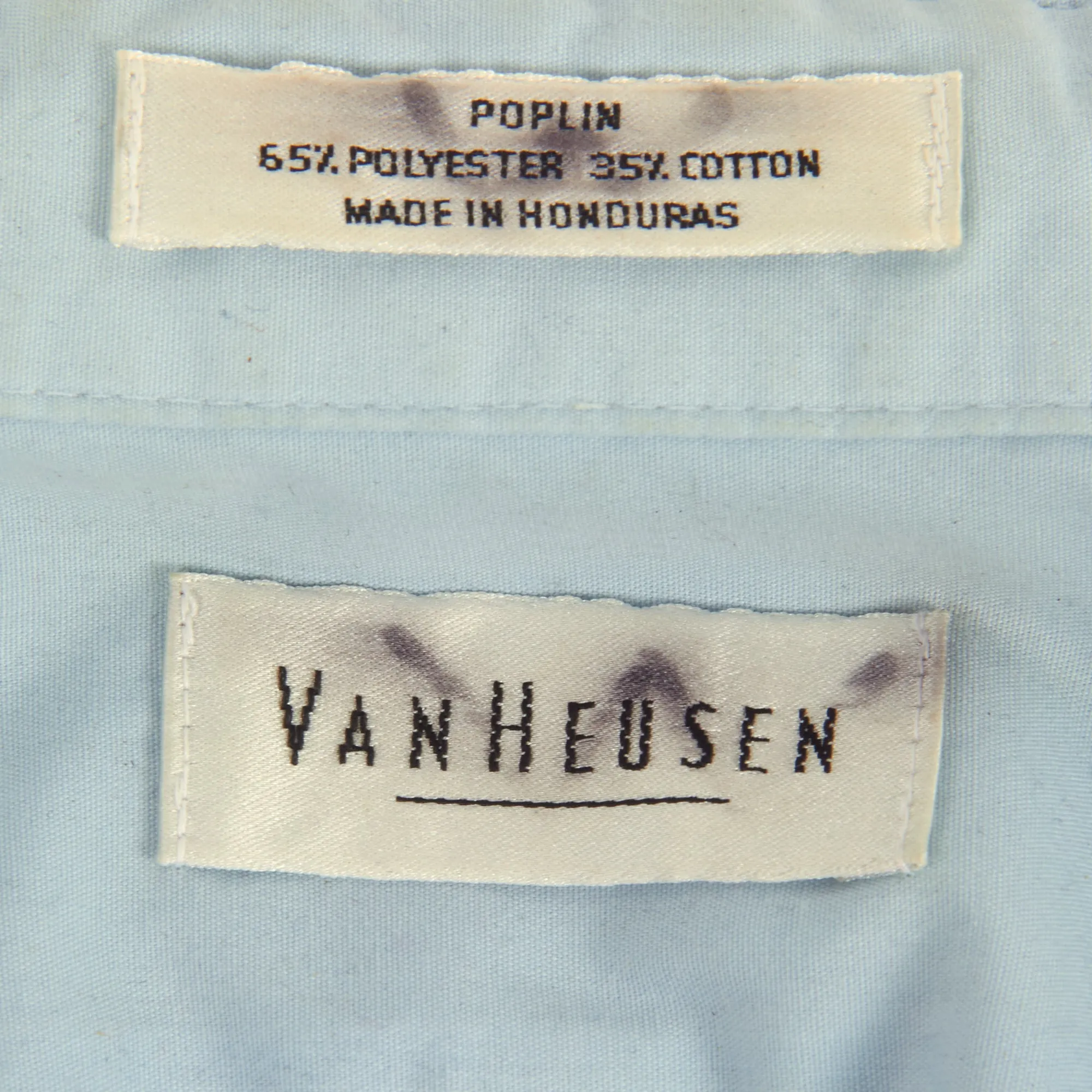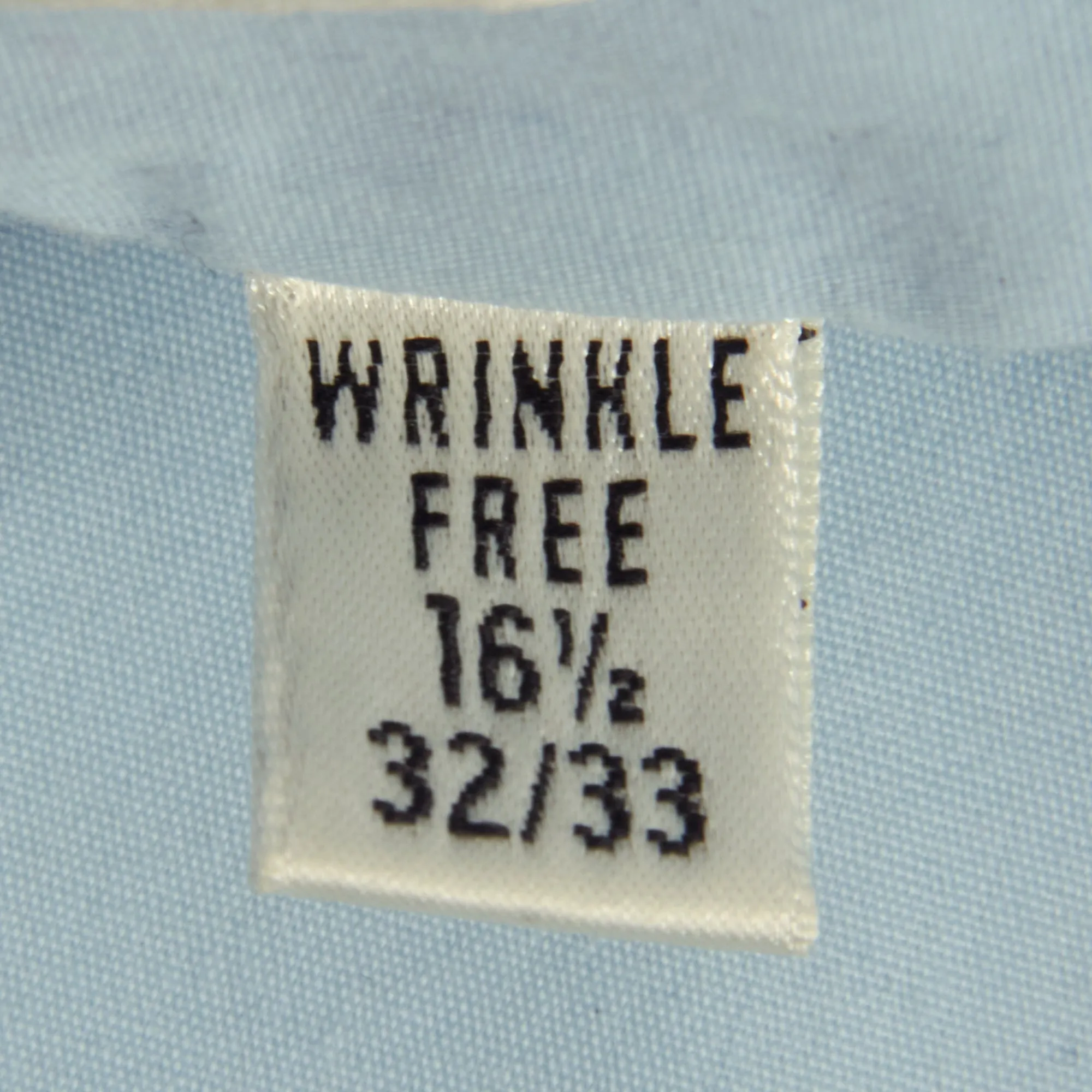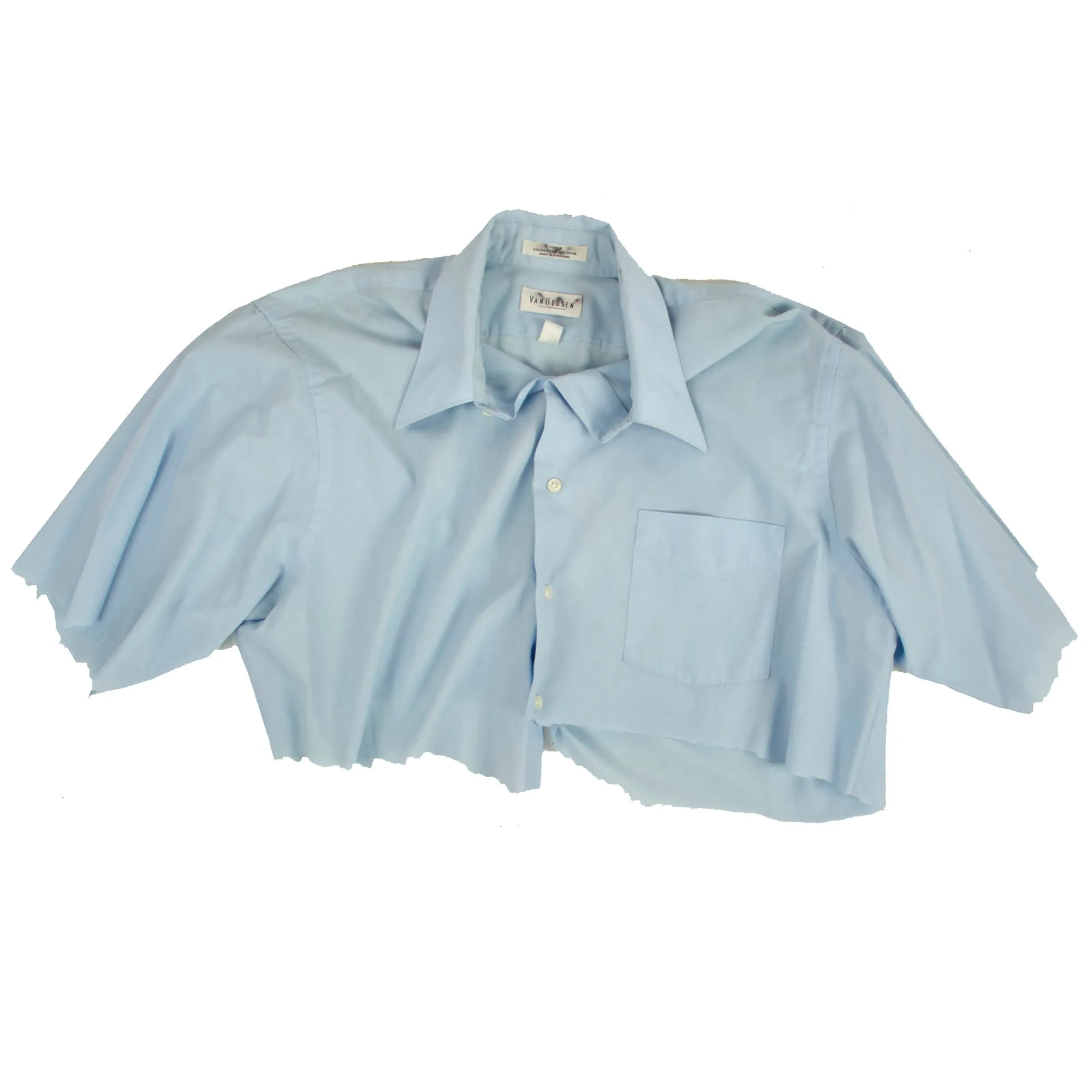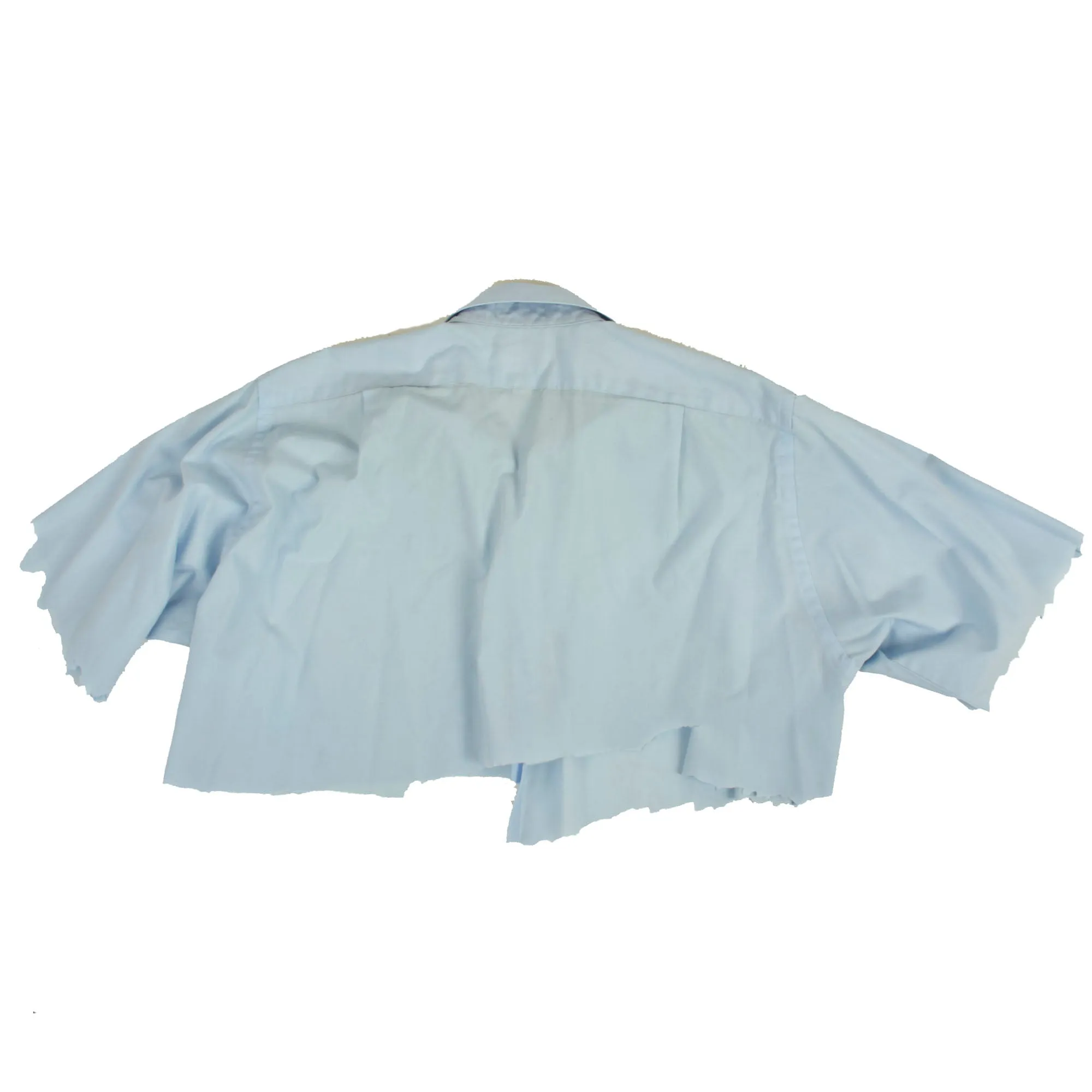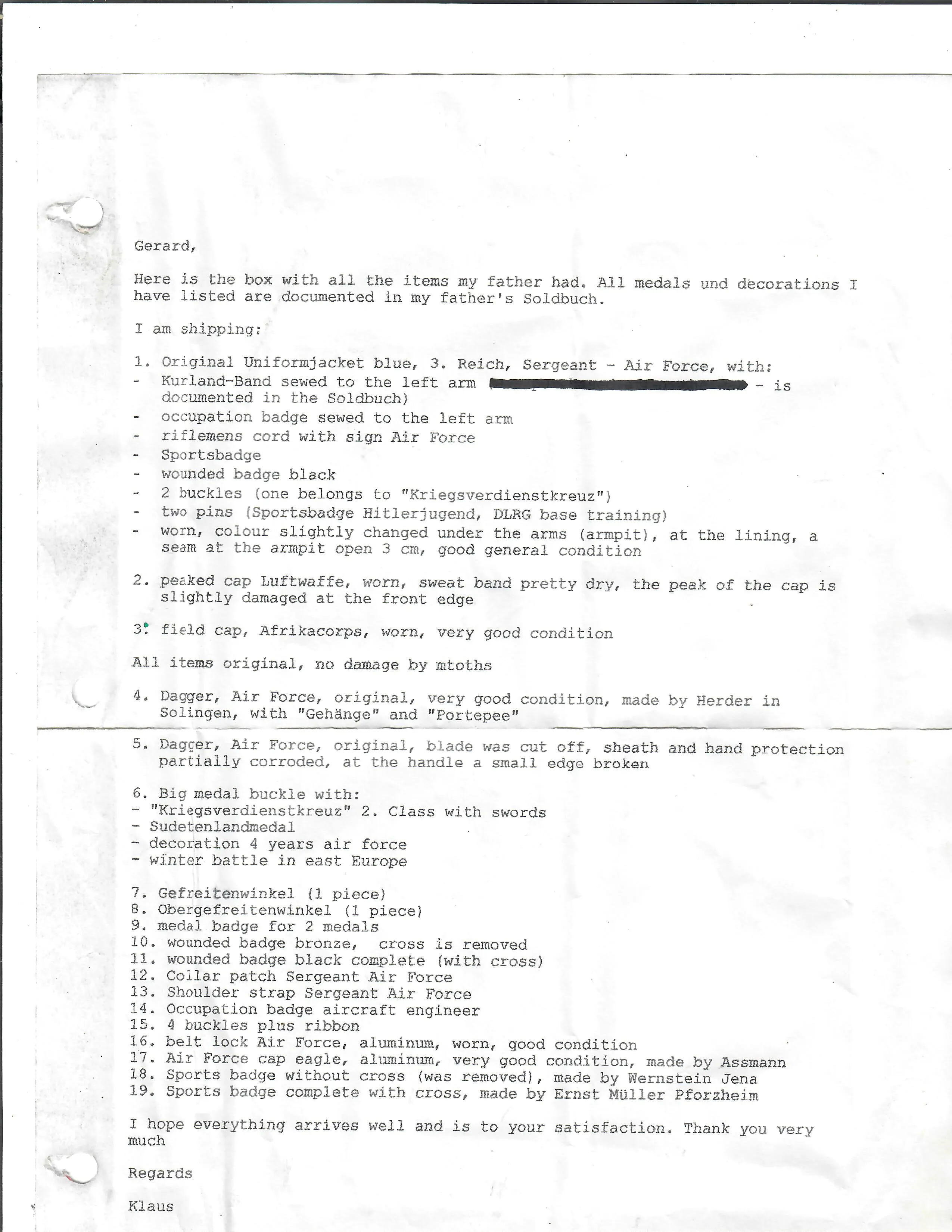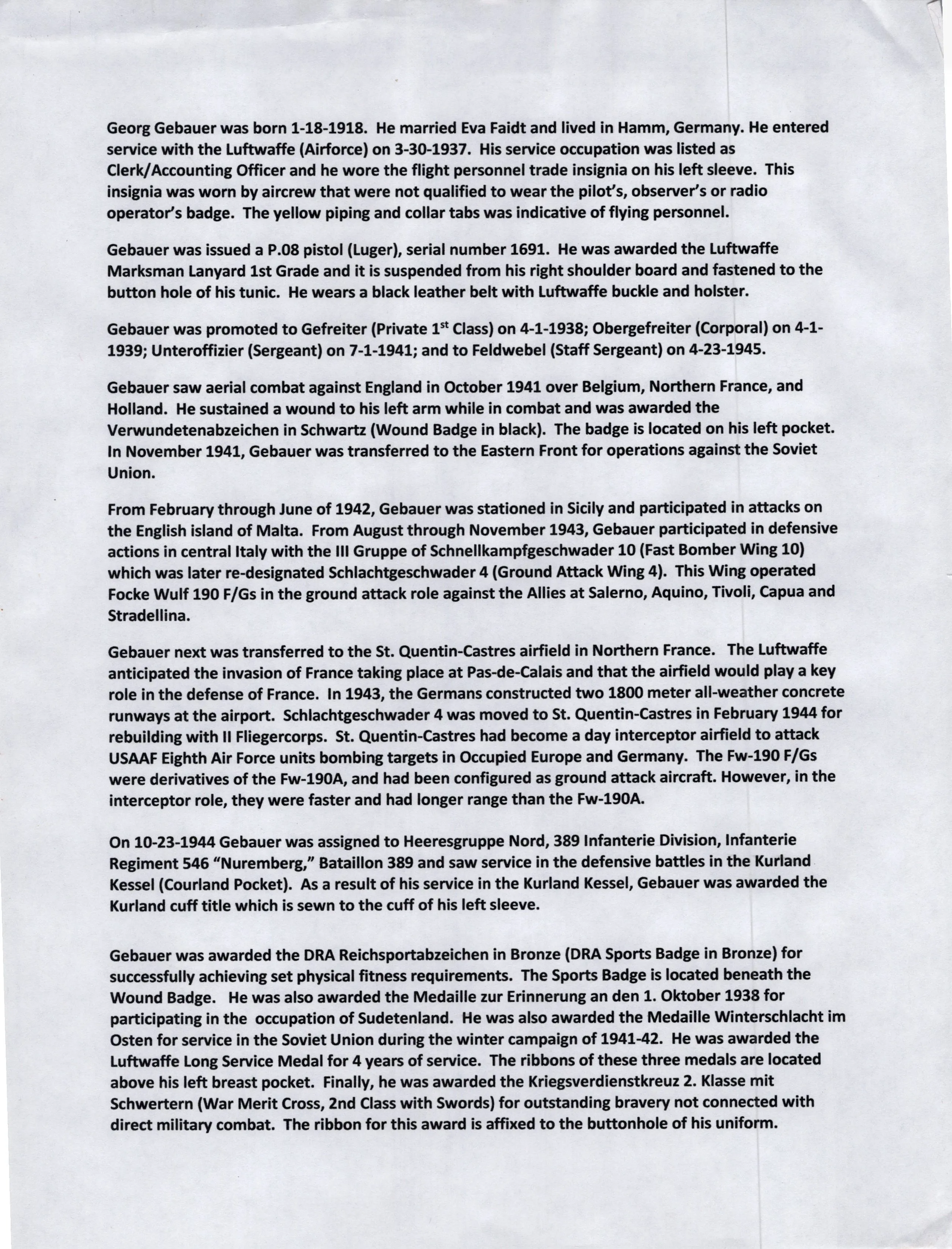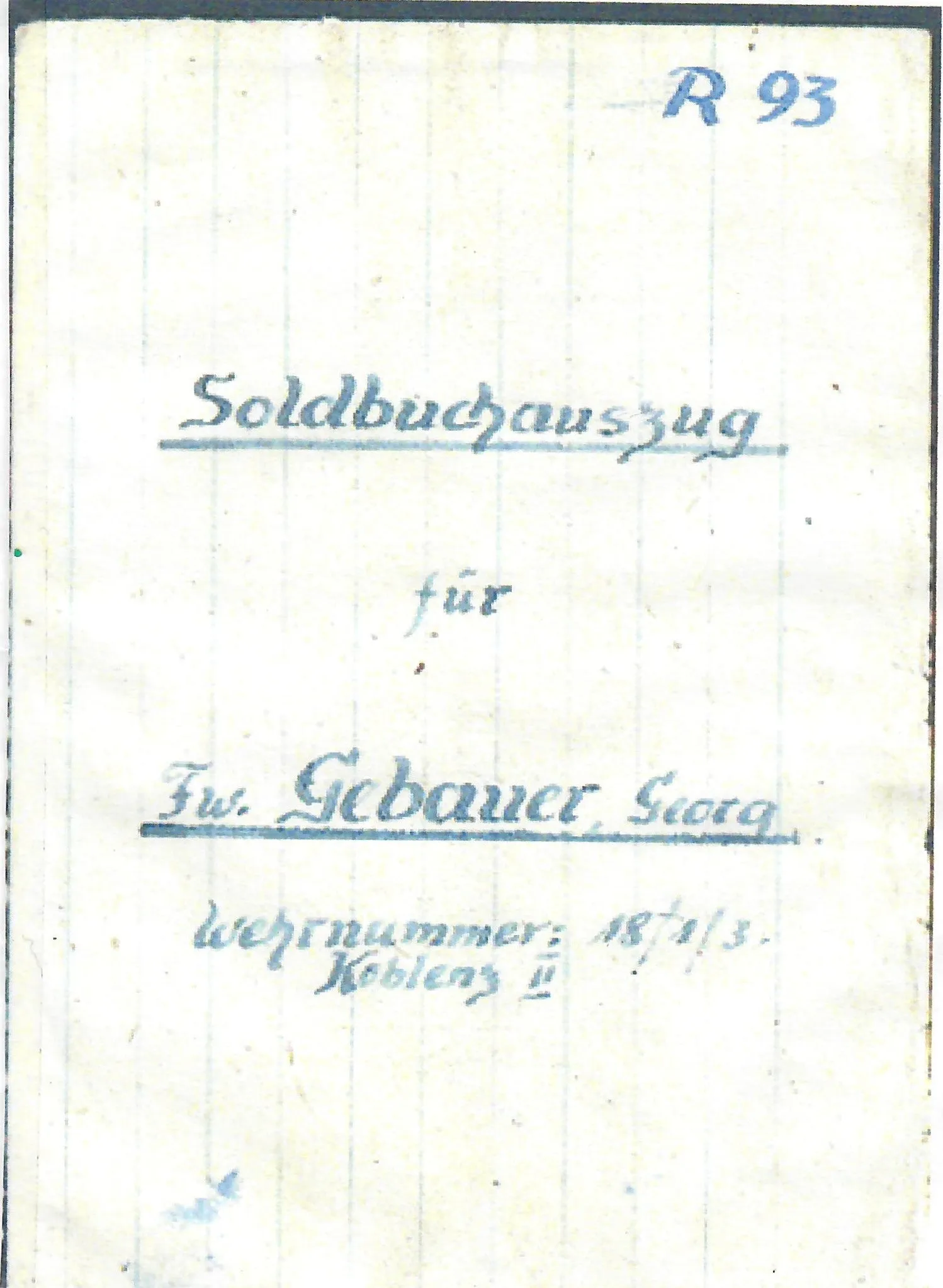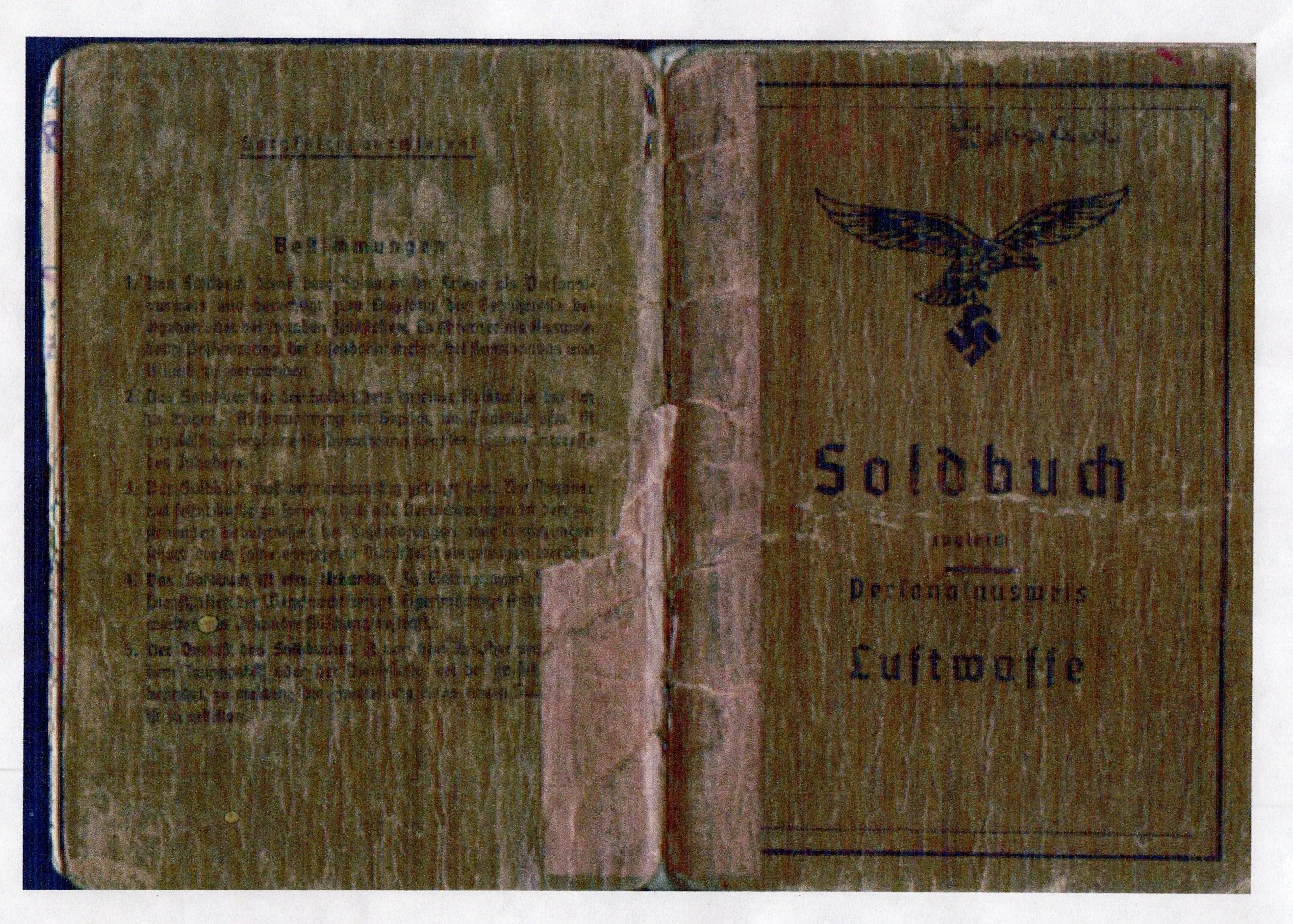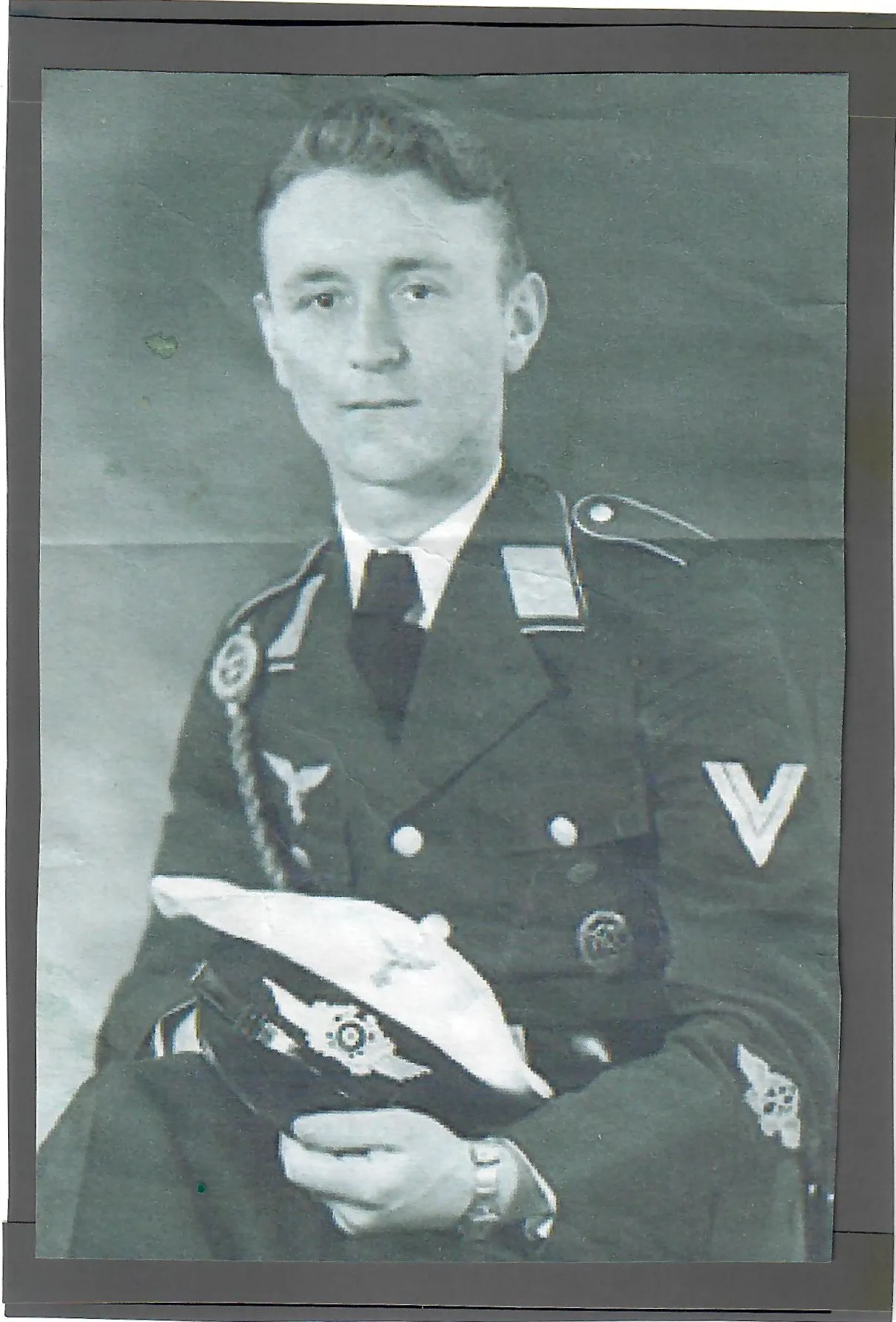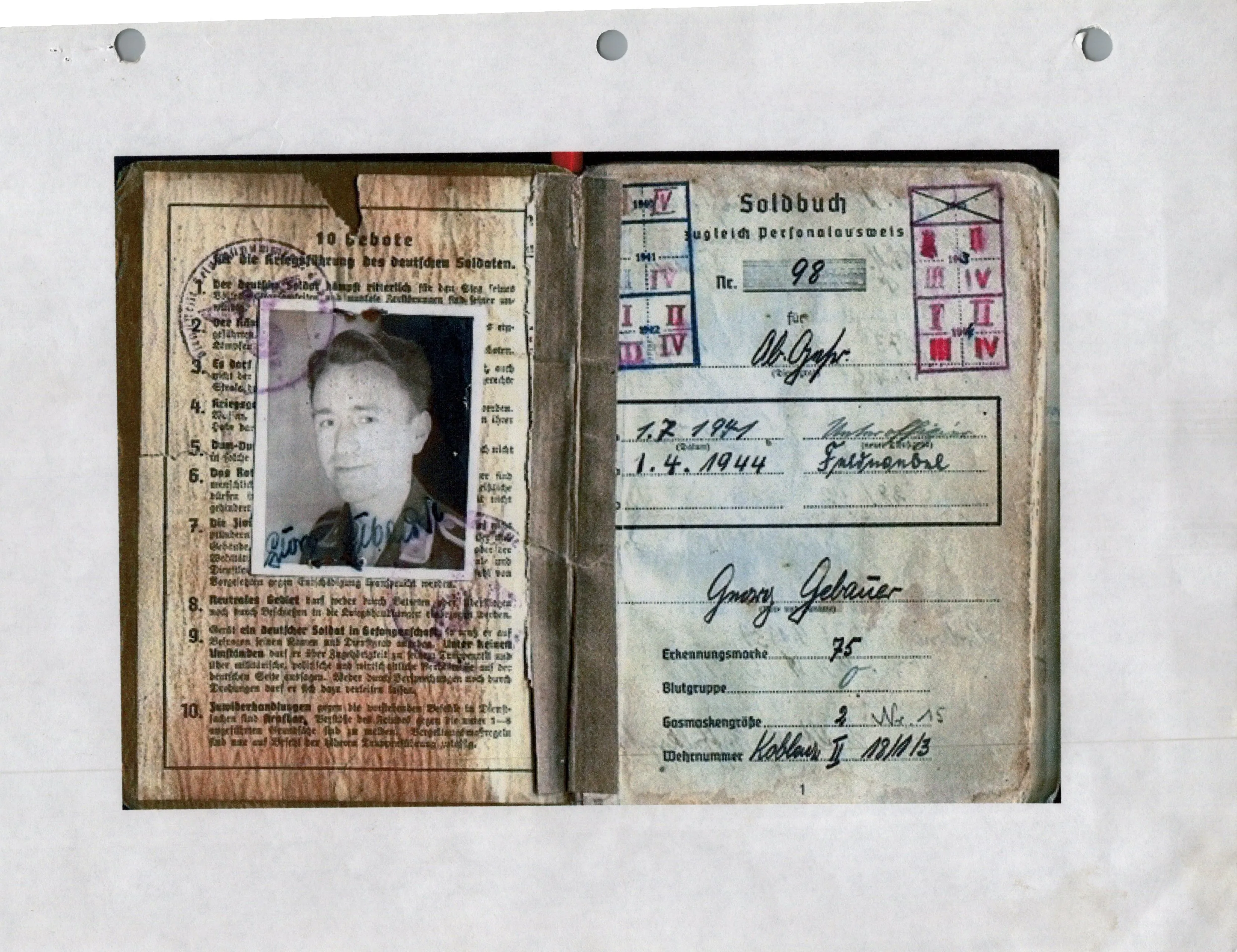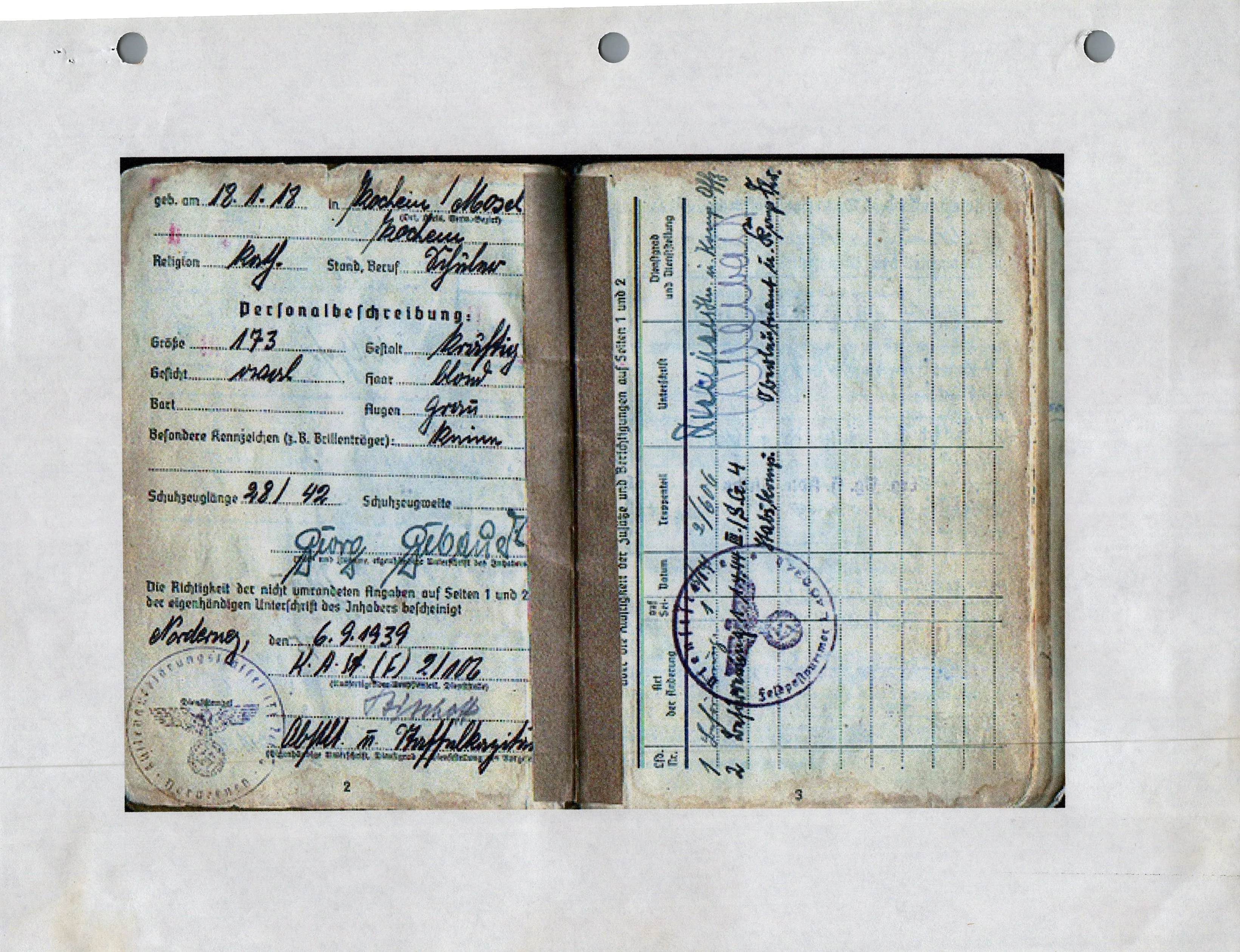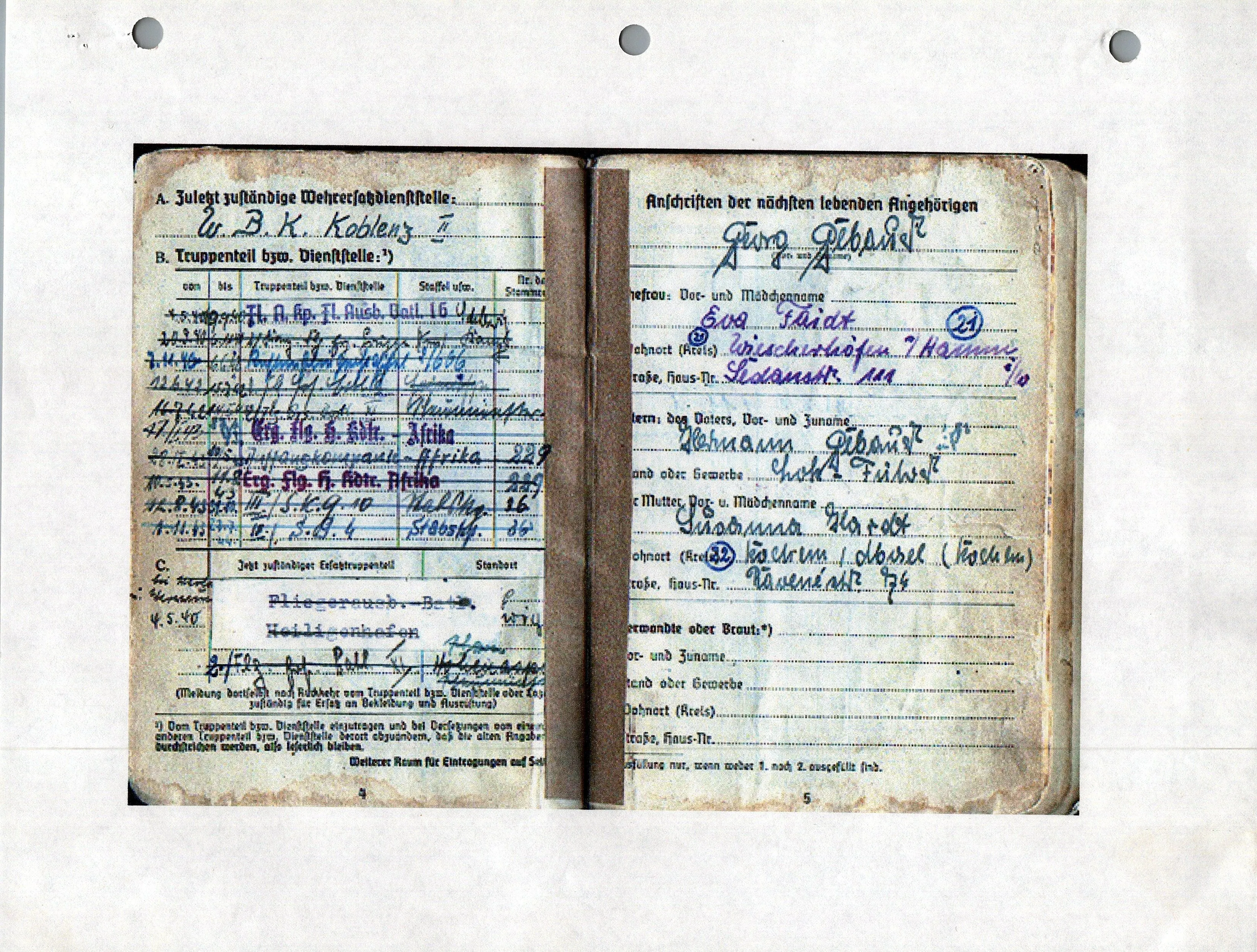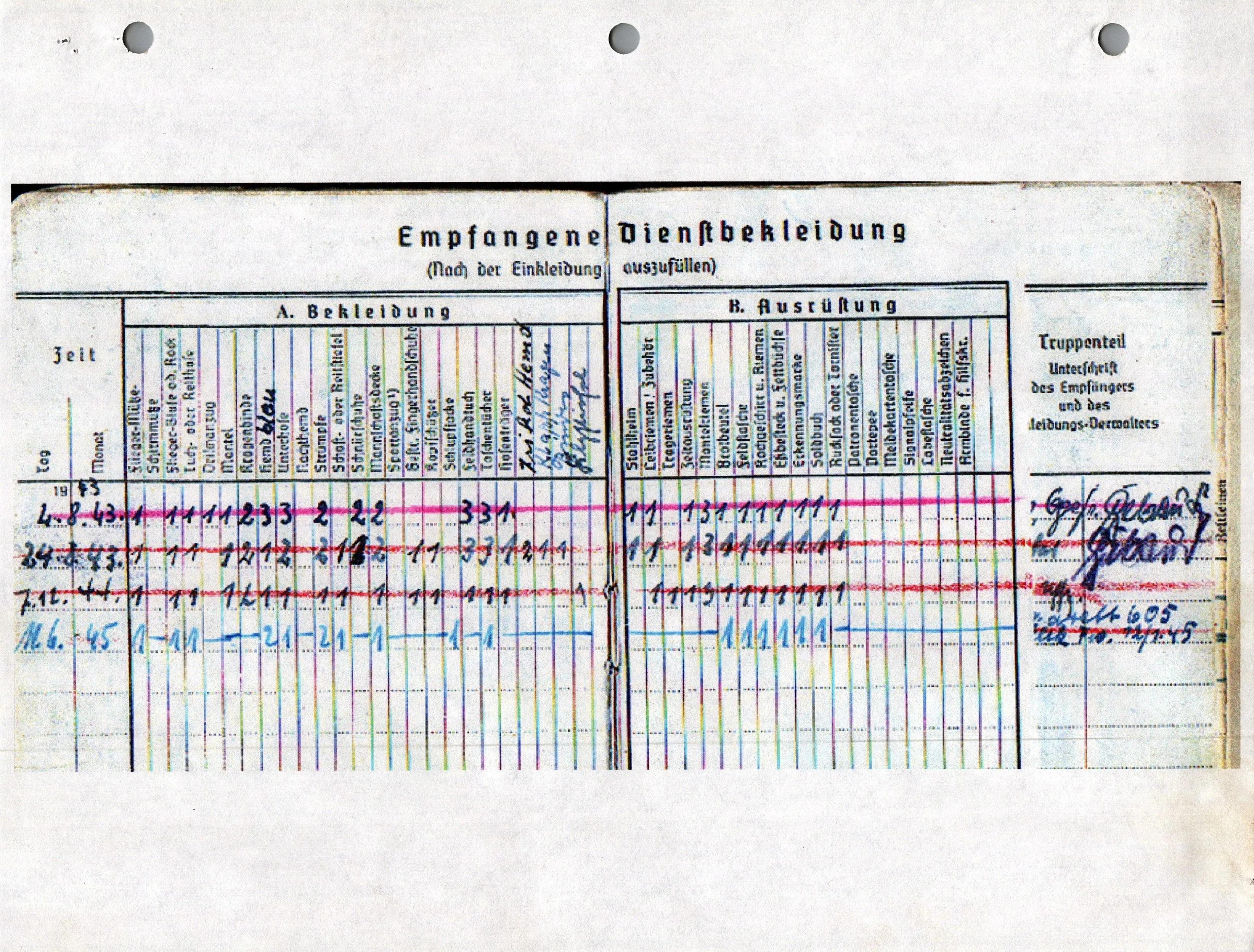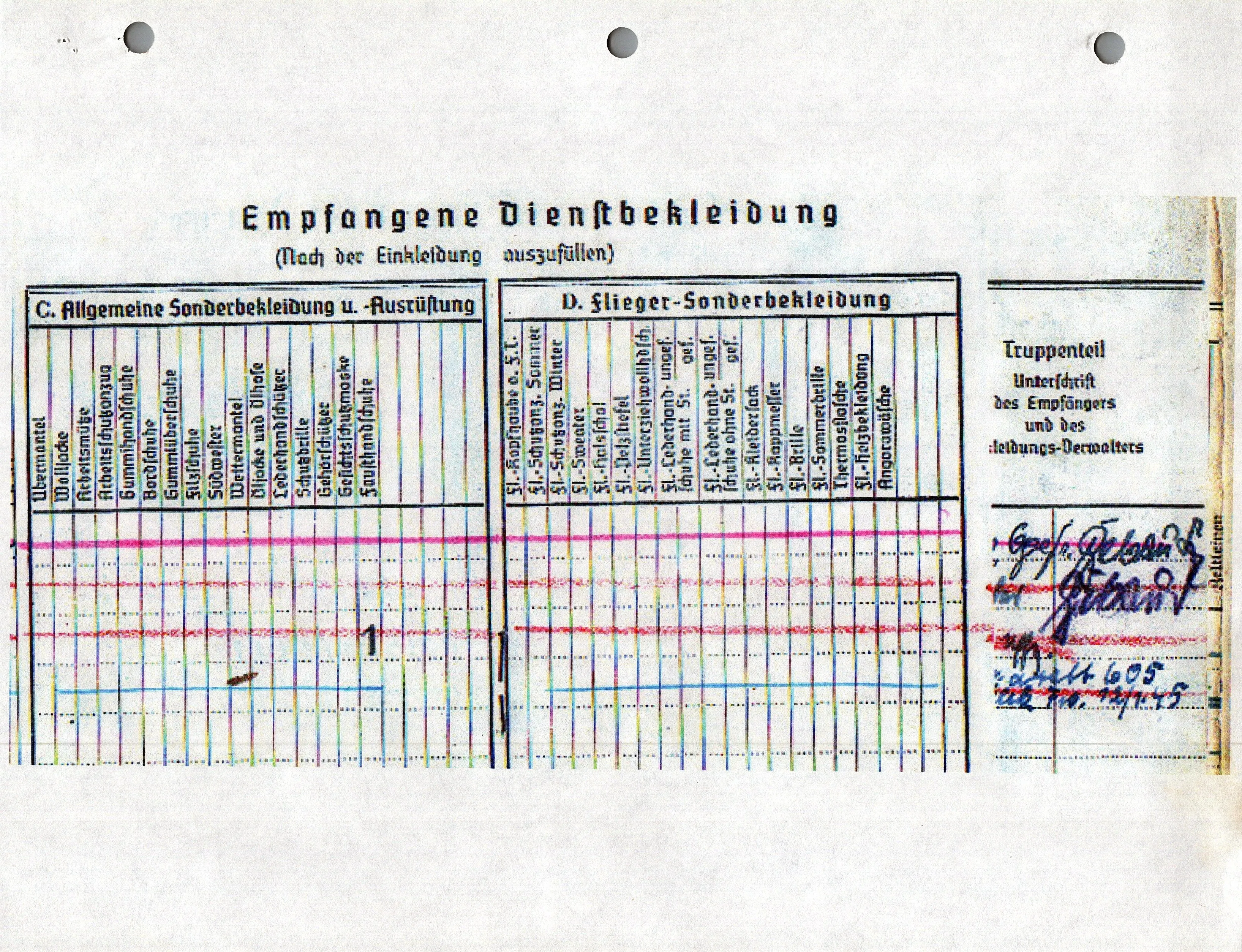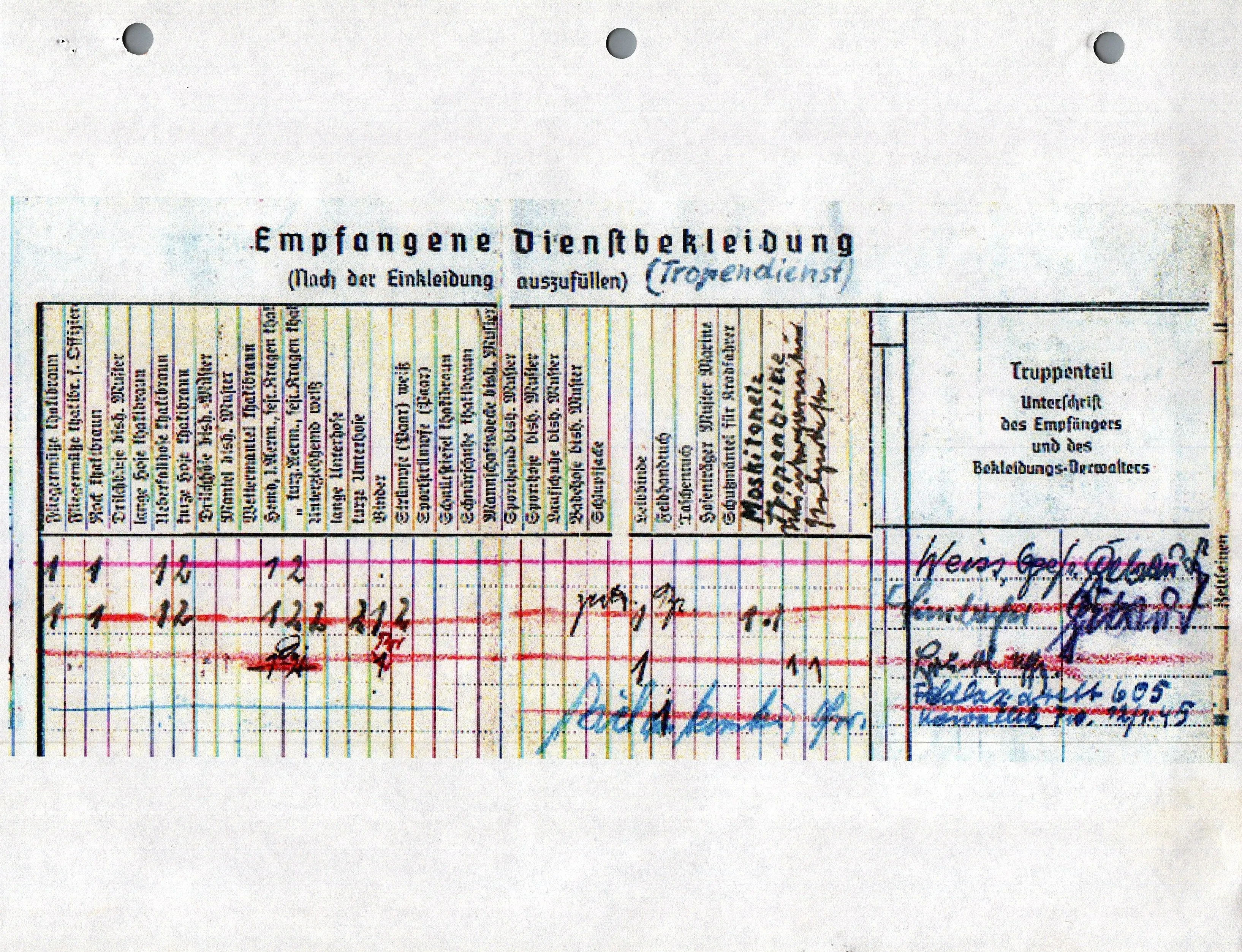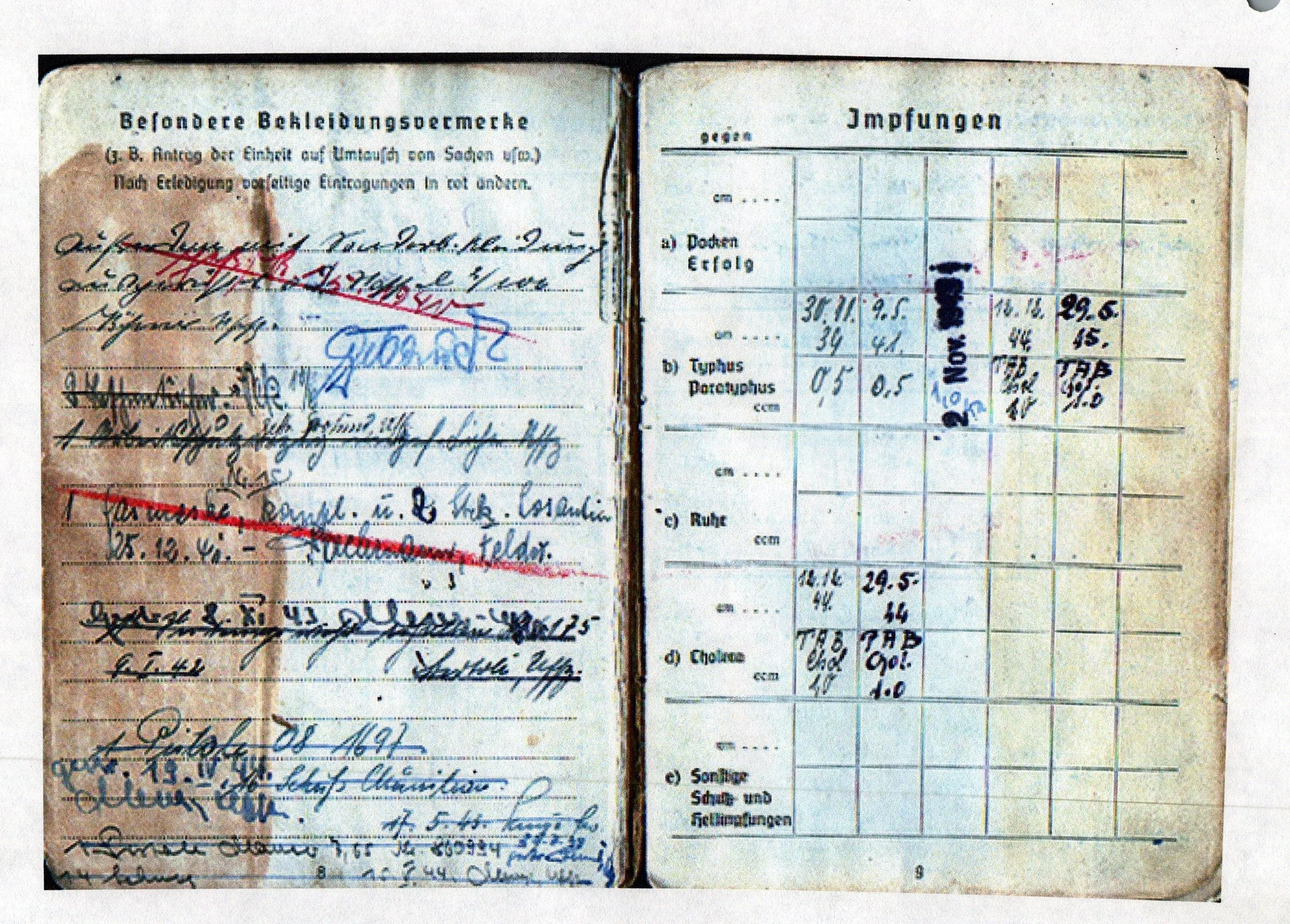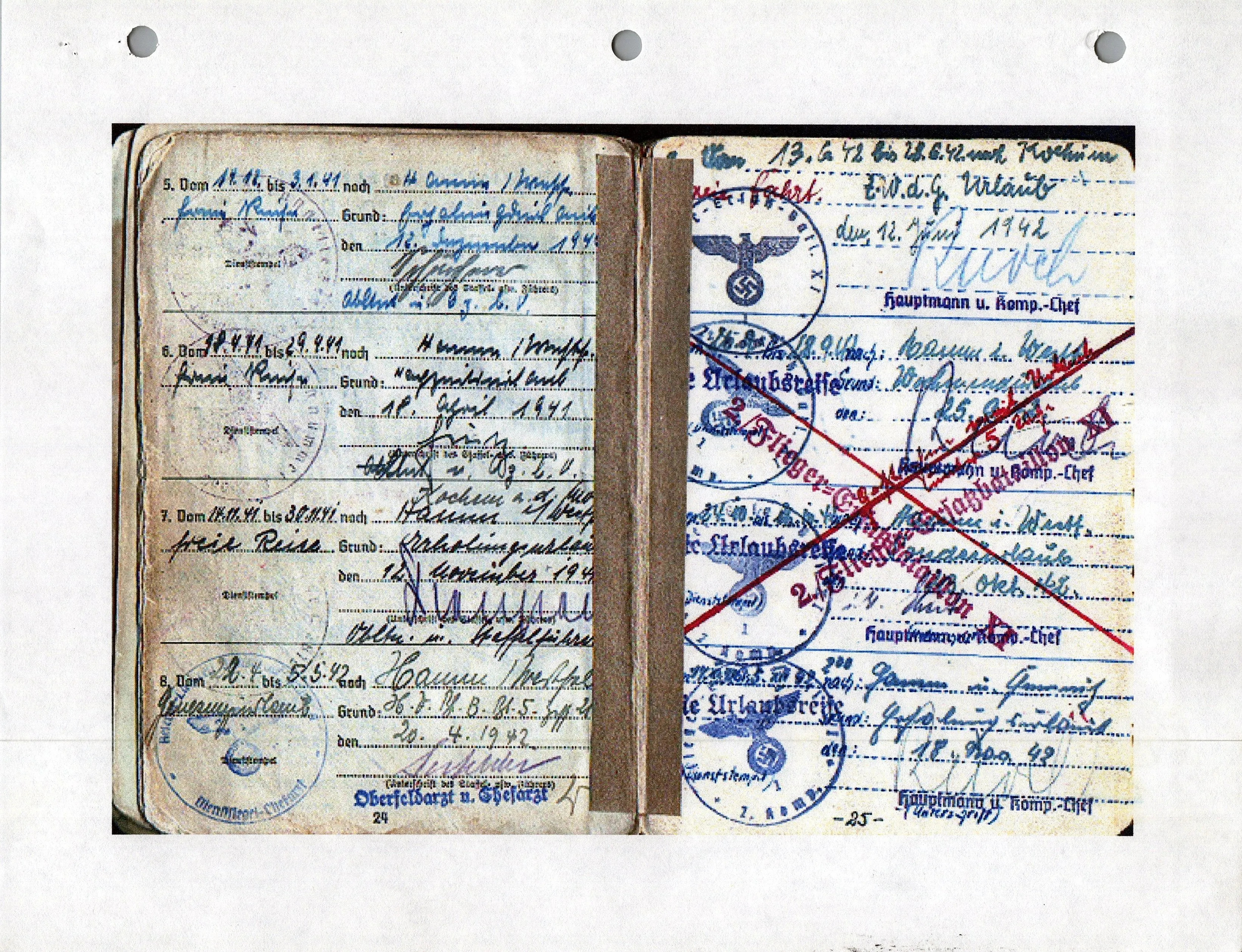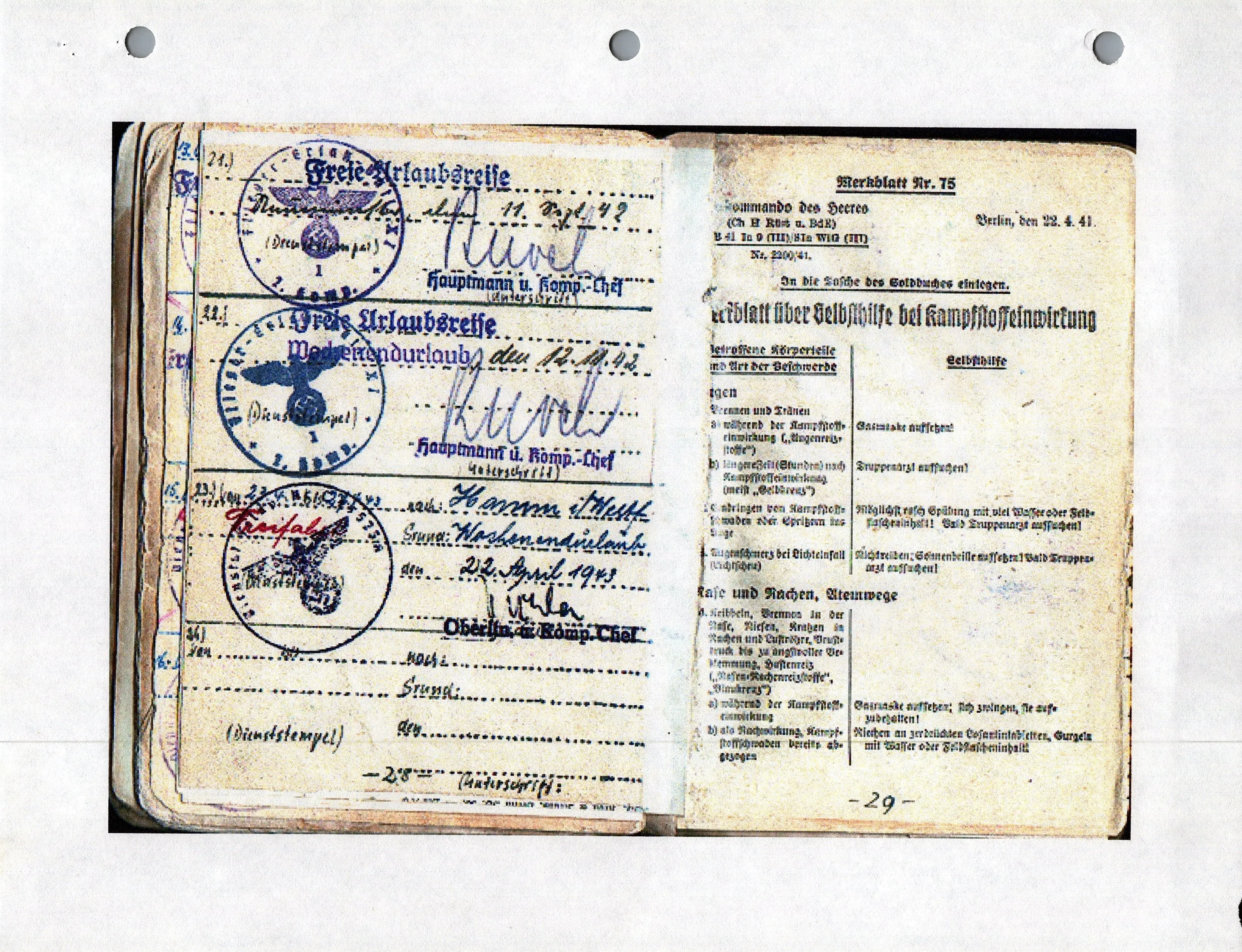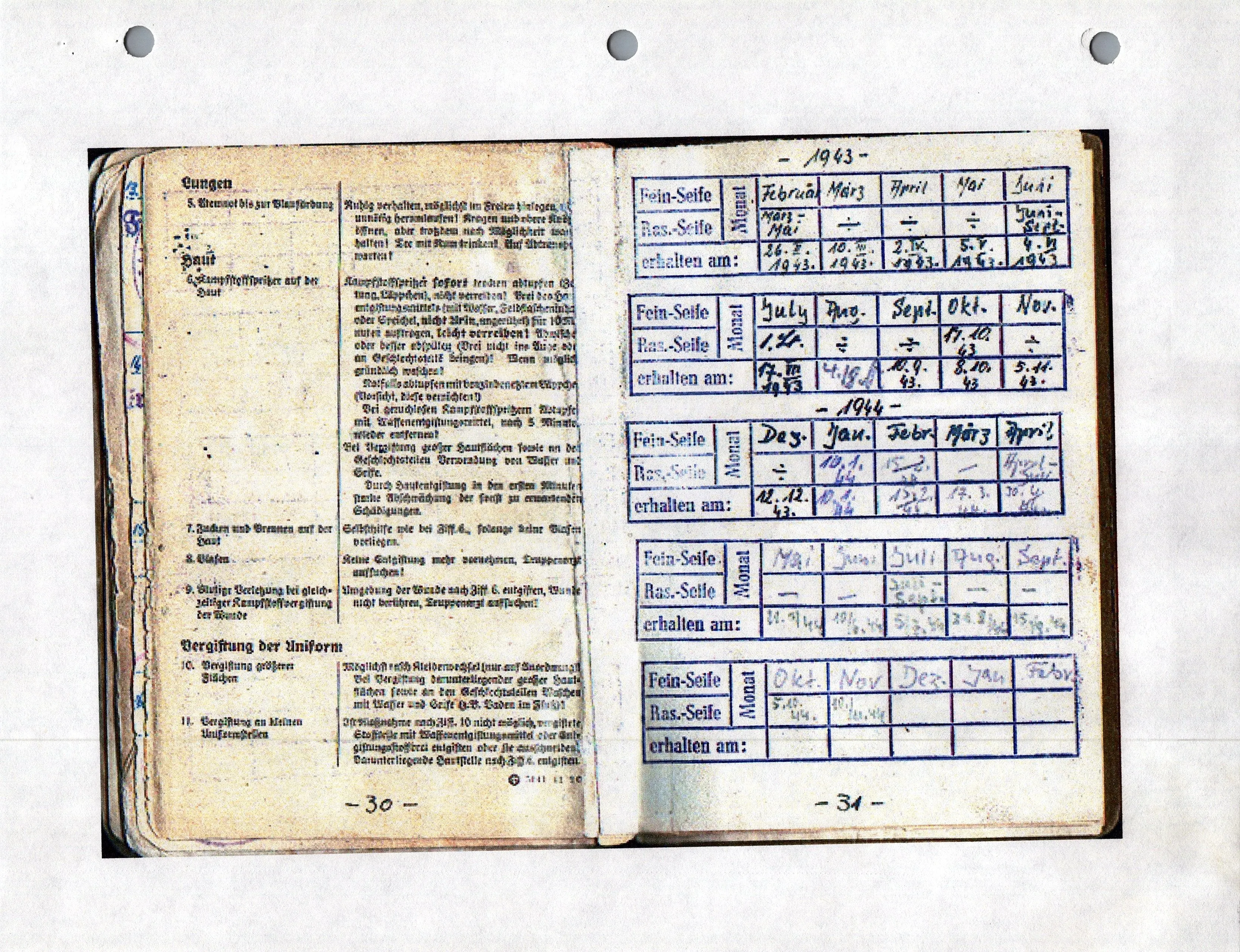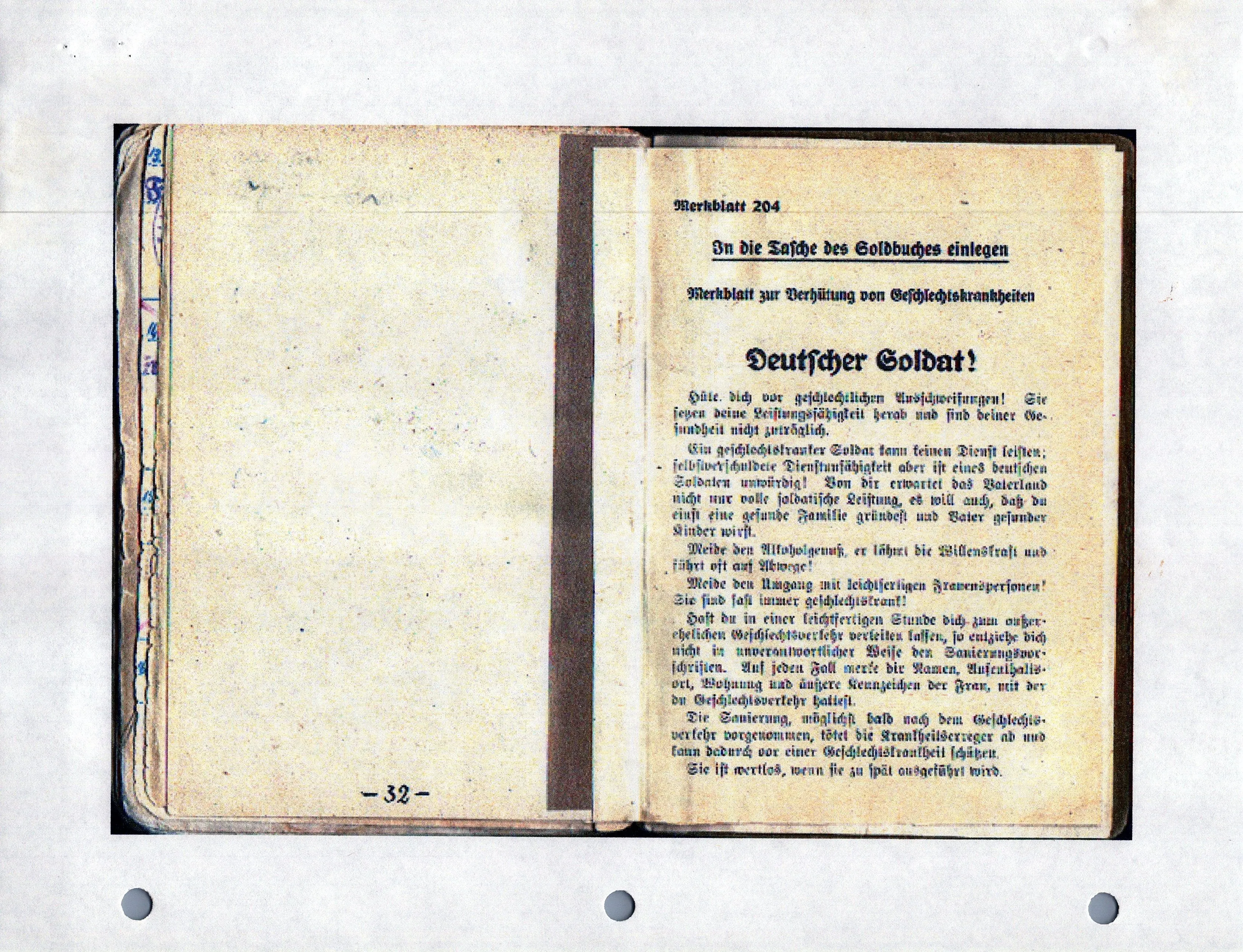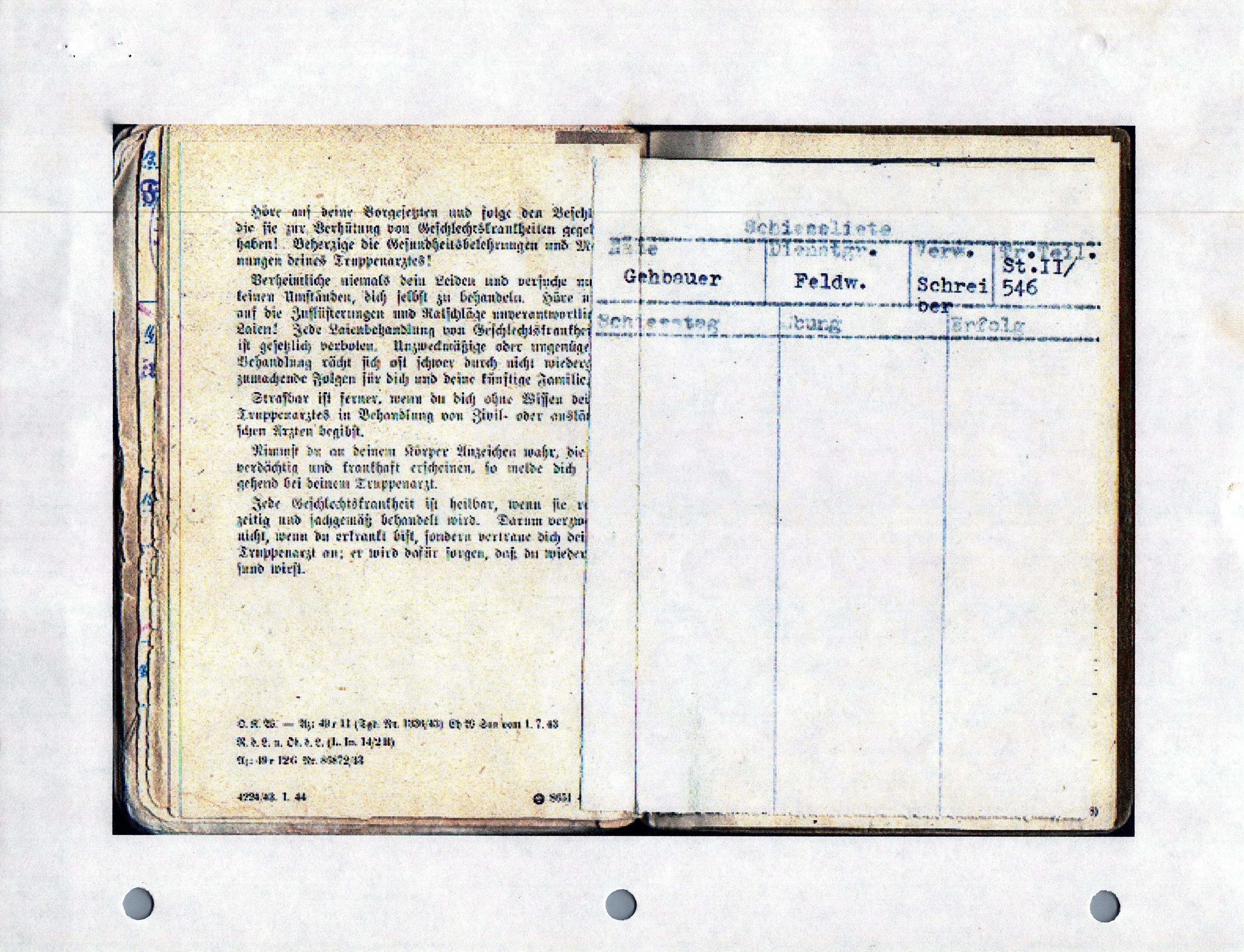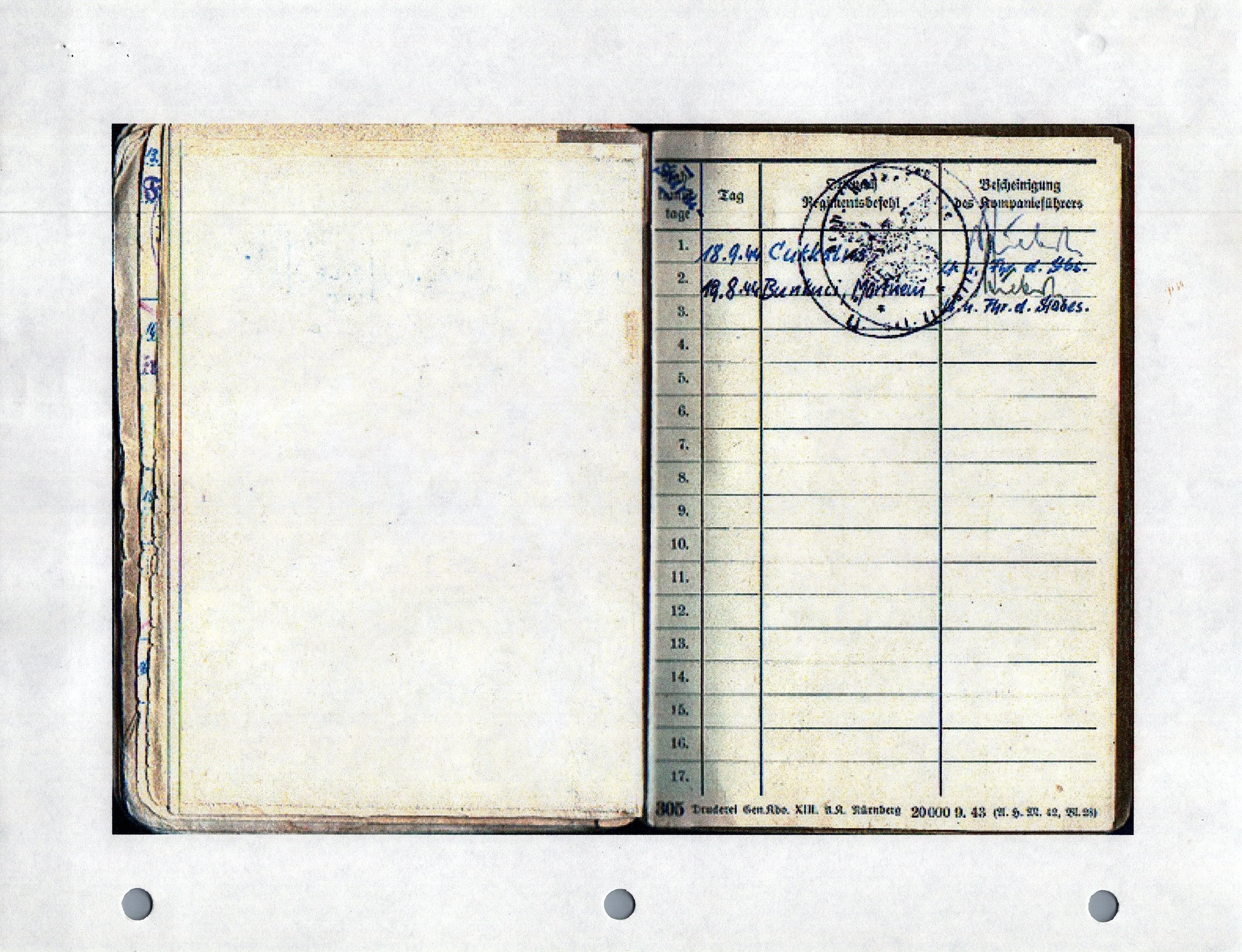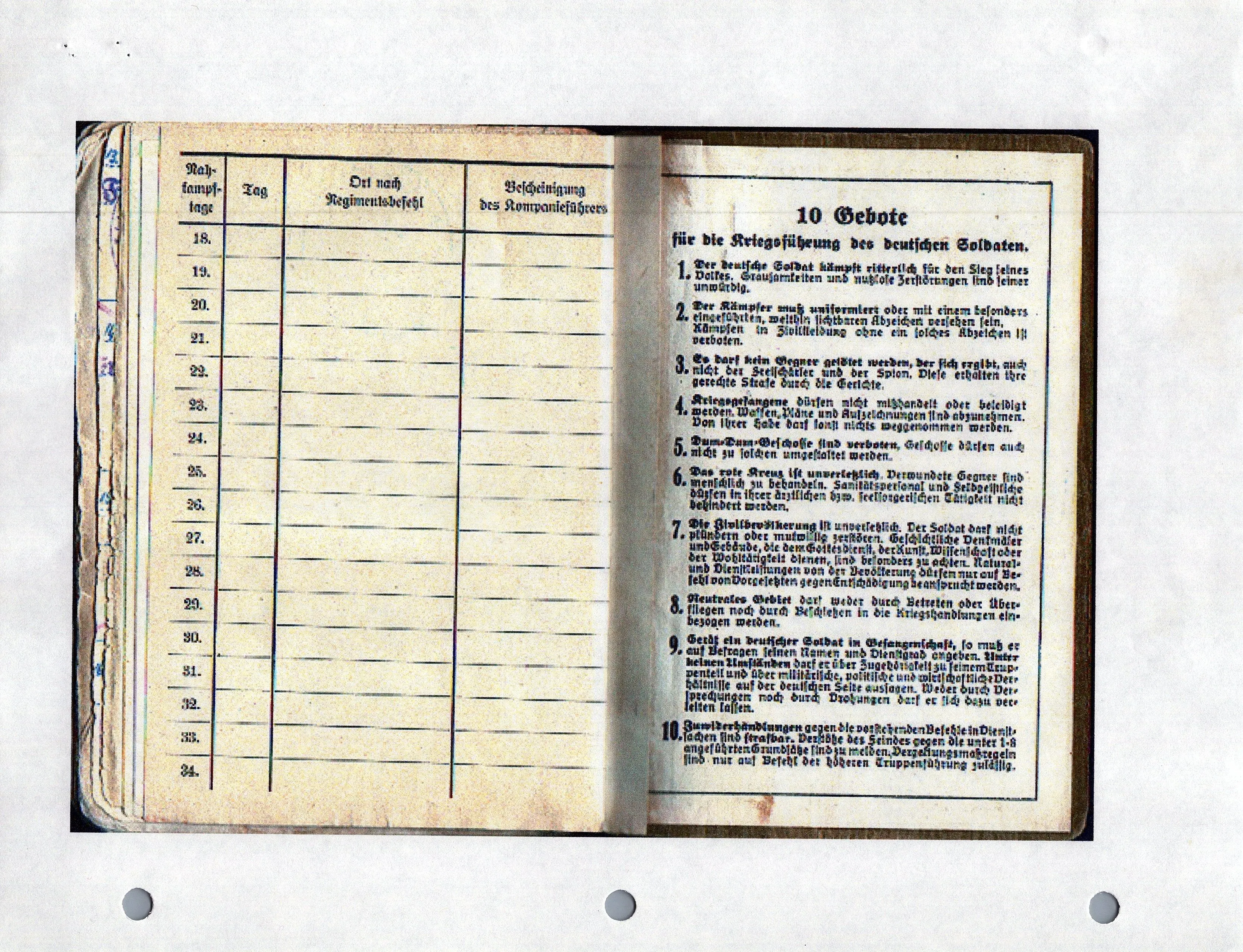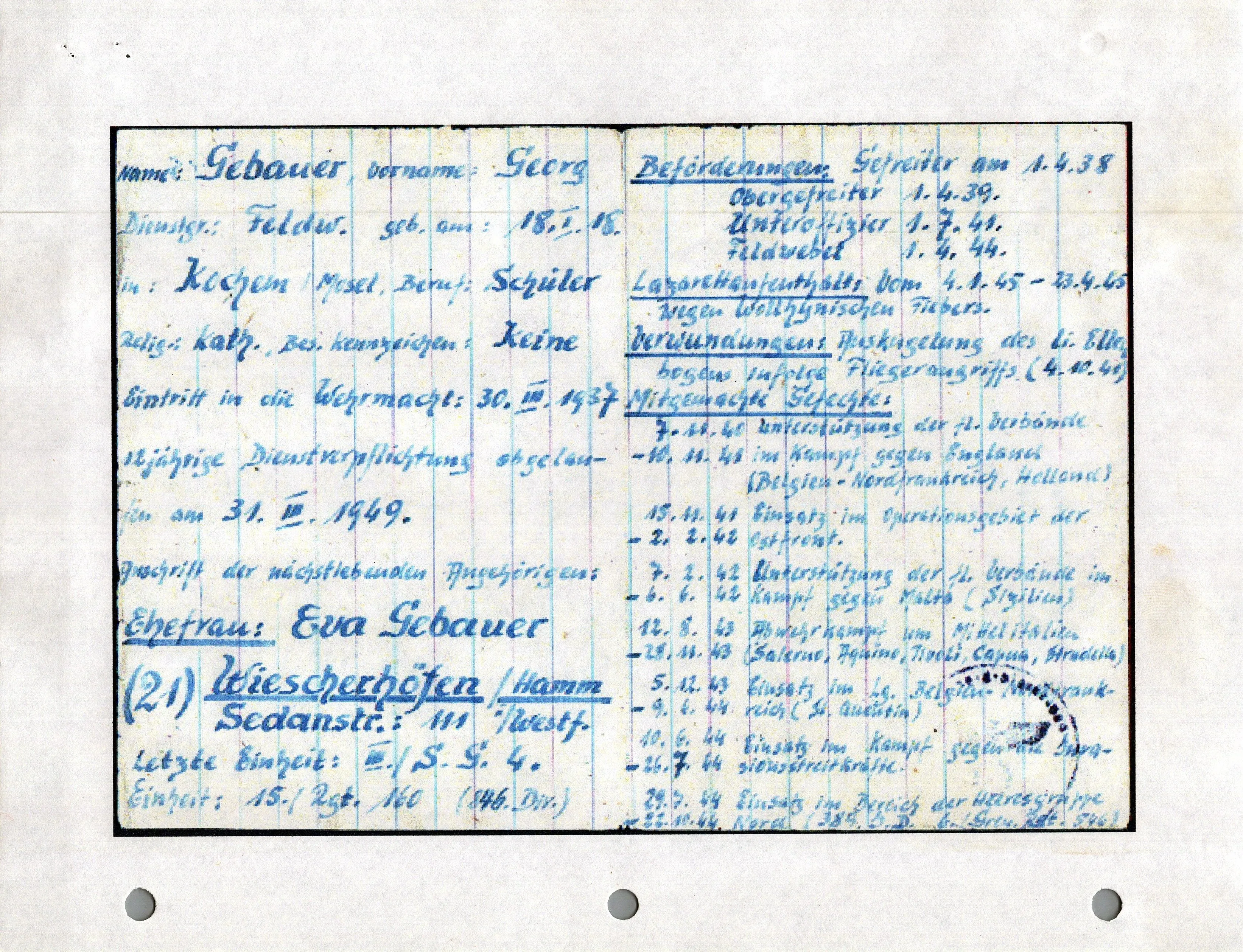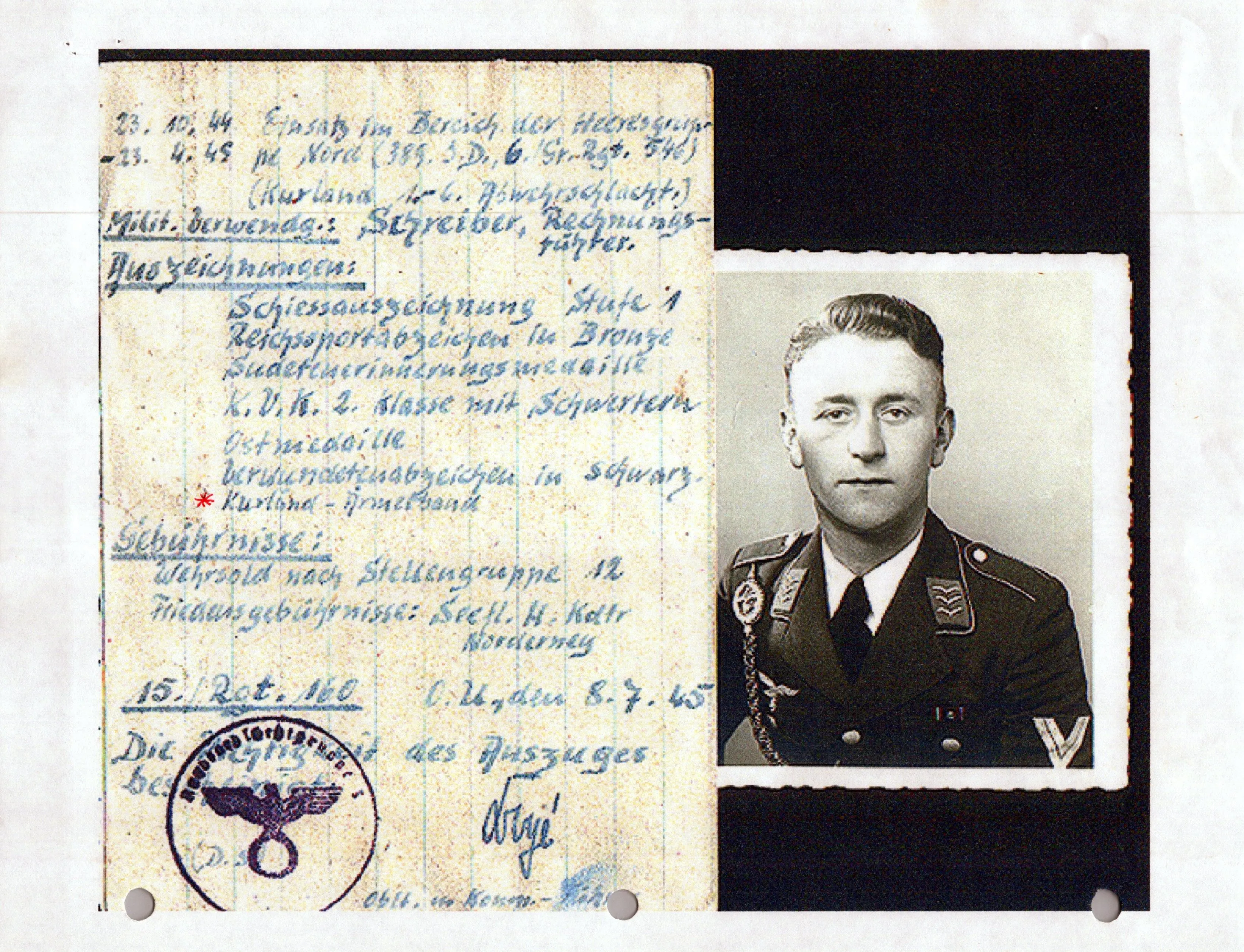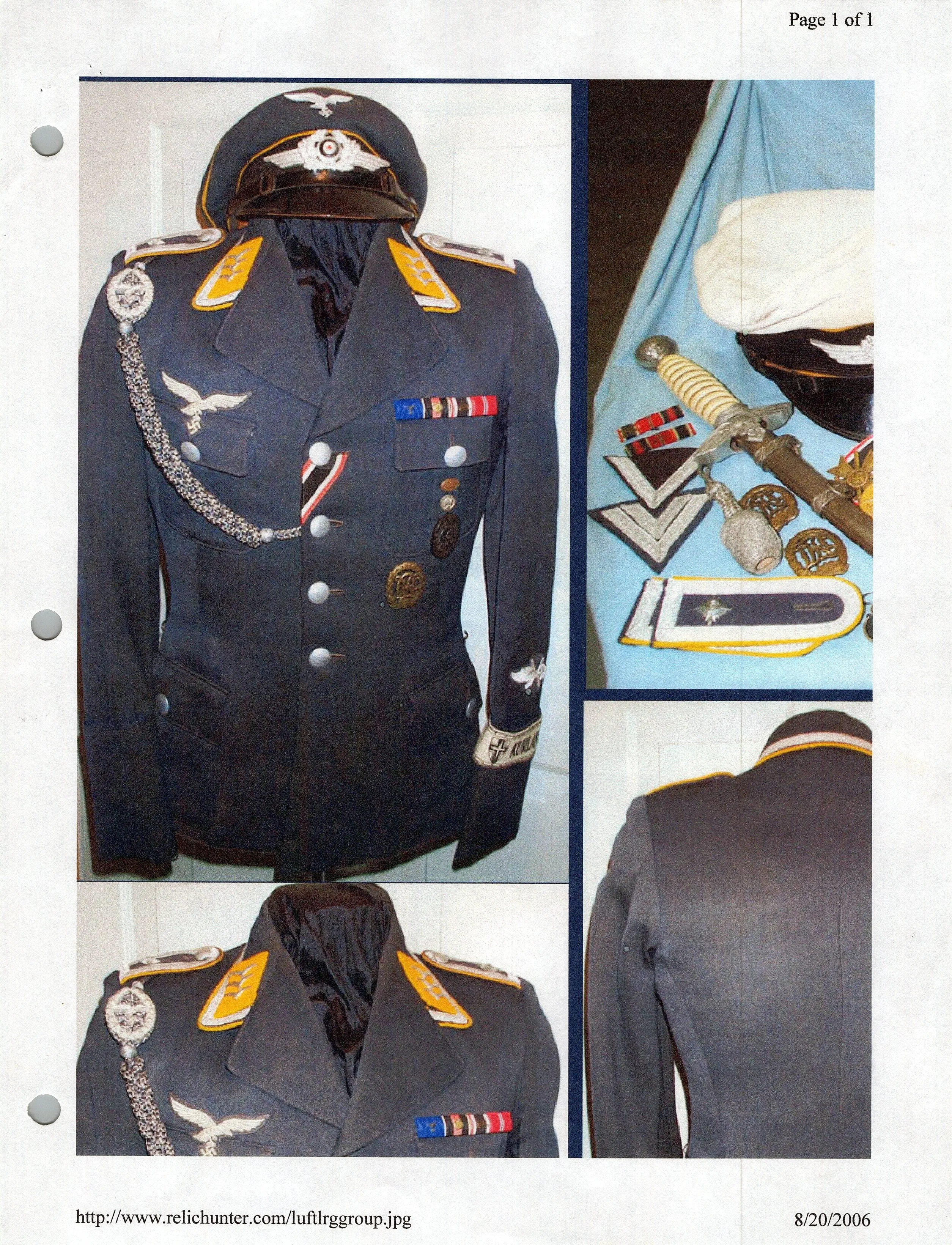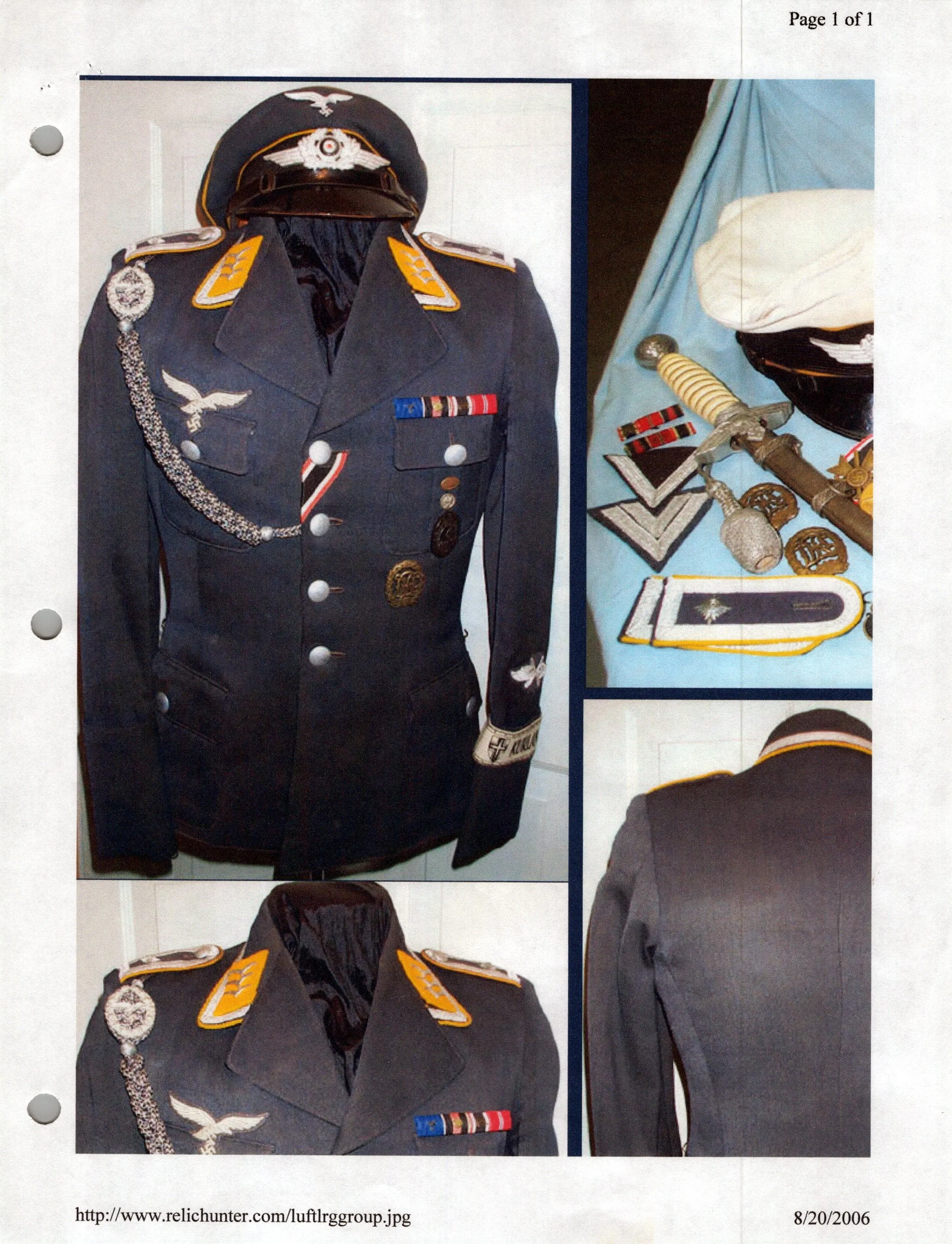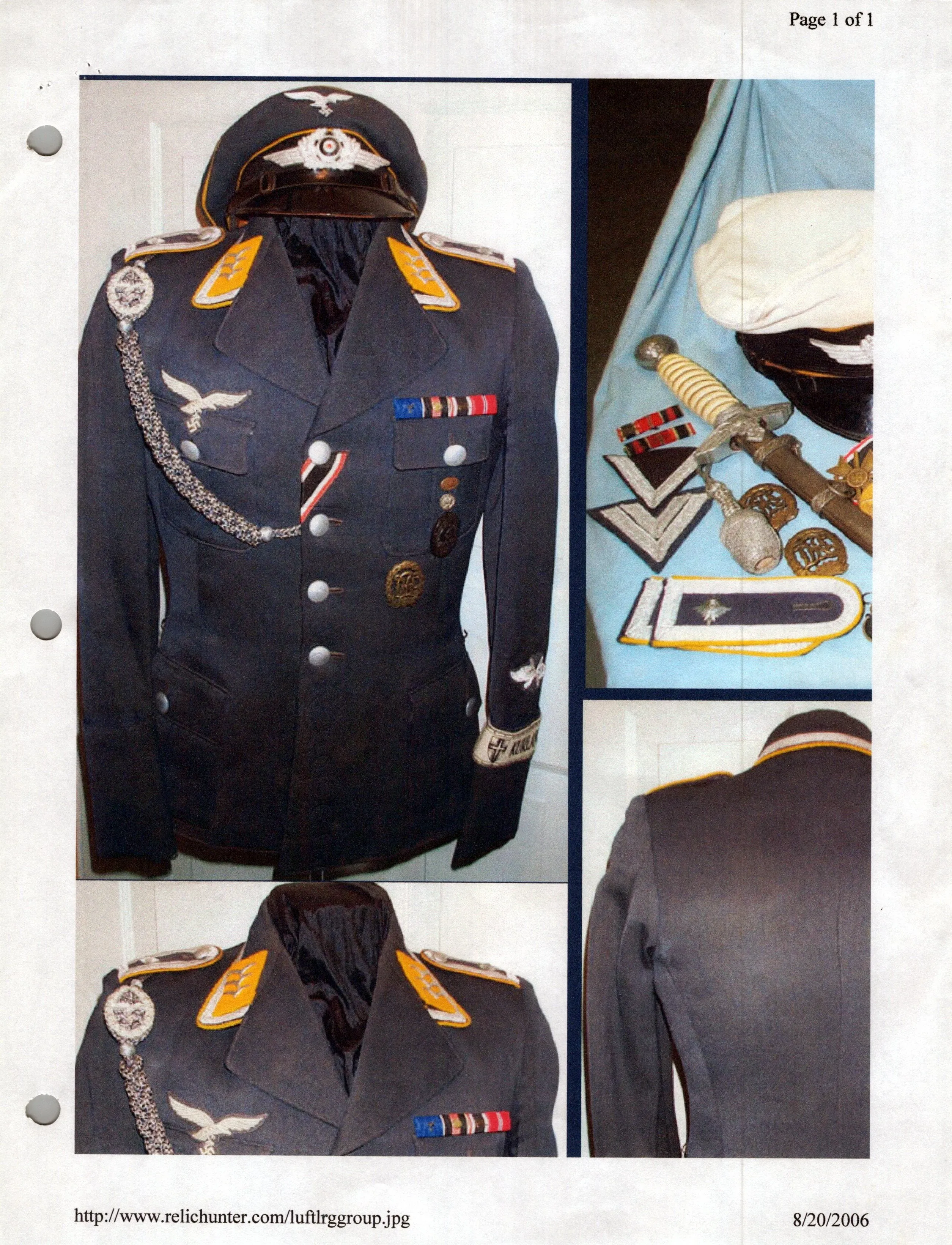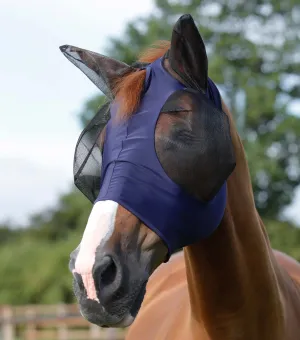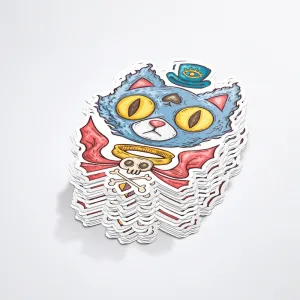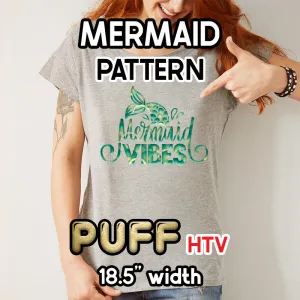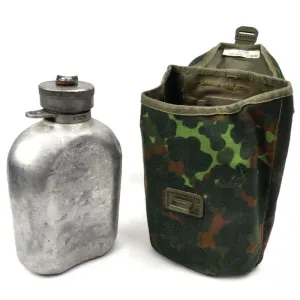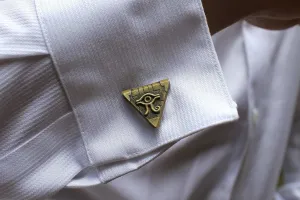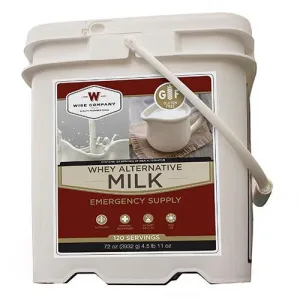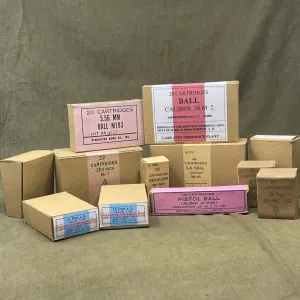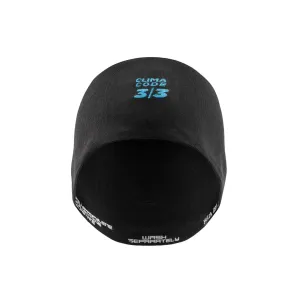Original Item: Only One Available. This is an incredible German WWII Luftwaffe grouping, the likes of which we rarely get to see! This great grouping was originally acquired directly from the son of Luftwaffe Feldwebel (Flight Sergeant) Georg Gebauer, Klaus. It includes his Flight Blouse Tunic with a very rare KURLAND Ärmelstreifen (Courland cuff title) and all insignia, as well as a small binder full of documentation regarding his service. Also included are a recent cut off dress shirt and tie, used to complete the look for display. If you looking for a great fully researched Luftwaffe pilot grouping with wonderful display potential for your collection, this could be it!
The centerpiece of this collection is a fantastic WWII German Luftwaffe Flight Branch NCO Four Pocket Fliegerbluse (Flight Blouse) Service Tunic, tailor made with an intact maker tag at the rear of the neck. It is a bit frayed, so unfortunately we cannot read it accurately, but perhaps someone who is more familiar with makers of German Luftwaffe uniforms may be able to identify it. The tunic is in very good / excellent condition, especially considering the long service it most likely saw during the war. This great piece is produced in Luftwaffe blue grey wool and shows only only light wear and fading from use, especially around the collar. All buttons are bright finished pebbled aluminum and back marked. The pocket flaps are all squared, and the front closure features 4 buttons, all sewn directly to the tunic. The right breast of the uniform has a correct embroidered NCO Luftwaffe eagle sewn in place with the correct stitching pattern. It is only stitched to the outer layer of fabric, so it is the original eagle installed on this uniform tunic.
The collar of this tunic has 10mm wide NCO Tresse flat silver piping going around the entire collar, correct for an NCO fliegerbluse. The attached Kragenpatten (Collar Flaps) are in Goldgelb (Gold-Yellow), the correct Waffenfarbe (Corps Color) for Aviator troops such as pilots, air crew, and ground personnel, as well as Fallschirmjäger (parachute troops). The sew-in style Schulterklappen (Shoulder Boards or Epaulettes) have the same color piping, and a single row of 10mm NCO tress around the outside with a single "Pip" added, indicating the rank of Feldwebel (Flight Sergeant). This is confirmed by the collar insignia, which each show three "gull wing" insignia. The left sleeve is adorned with a Fliegendes Personal Tätigkeitsabzeichen (Flight Personnel Specialty Badge).
Under this is a very rare KURLAND cuff title, only awarded to soldiers trapped in the "Courland Pocket", some of the last Germans to surrender during the war. Gebauer's service record confirms that he was in a unit stationed to that pocket, and was eligible to receive the award. Close examination shows that it matches other period examples, which actually had to be locally manufactured due to the the encirclement of the pocket.
The top buttonhole on the tunic the tunic has the ribbon for an War Merit Cross 2nd Class installed. Above the left pocket is a three award medal bar, for the War Merit Cross 2nd Class with Swords (for combat), the Eastern Front Medal, and the Czech Commemorative Medal with Prague Castle Bar. Between the right shoulder and top button there is a Grade I Luftwaffe Schützenschnur Marksmanship Lanyard
The interior of the tunic is lined in fine blue gray rayon, with striped rayon sleeve lining, as is usually seen on German WWII tunics. There is some fraying of the lining around the seam areas, some of which have pulled out a bit. It features an internal belt for a more form fitting appearance, though it is not adjustable.
Overall exterior condition is excellent, showing only light wear from service. It is remarkably well preserved considering how long it probably served Gebauer. We cannot see any real mothing, and the colors are vibrant and well retained. Some of the stitching is loose, such as on the collar piping, but that it to be expected after so much use. The Bullion is still bright, and the buttons are lovely. Really a choice example here!
The included documents tell much of the story of Georg Gebauer's service, and include printed scans of his original Soldbuch ID and Pay book. These are all in German, but fortunately there is also a detailed typed biography for Gebauer included as well. This gives a great overview of his entire service history, which can be further researched via the included binder. Please see the photographs for scanned details.
A really fantastic grouping of a verified survivor of the Courland Pocket. Ready to research and display!
Approx. Measurements:
Collar to shoulder: 8"
Shoulder to sleeve: 25”
Shoulder to shoulder: 14.5”
Chest width: 18"
Waist width: 16"
Hip width: 18"
Front length: 27.5"
The Courland Pocket was an area of the Courland Peninsula where Army Group North of Germany and the Reichskommissariat Ostland were cut off and surrounded by the Red Army for almost a year, lasting from July 1944 until 10 May 1945.
The pocket was created during the Red Army's Baltic Offensive, when forces of the 1st Baltic Front reached the Baltic Sea near Memel (Klaipėda) during its lesser Memel Offensive Operation phases. This action isolated the German Army Group North from the rest of the German forces, having been pushed from the south by the Red Army, standing in a front between Tukums and Libau in Latvia, with the Baltic Sea in the West, the Irbe Strait in the North and the Gulf of Riga in the East behind the Germans. Renamed Army Group Courland on 25 January, the Army Group in the Courland Pocket remained isolated until the end of the war. When they were ordered to surrender to the Soviet command on 8 May, they were in "blackout" and did not get the official order before 10 May, two days after the capitulation of Germany. It was one of the last German groups to surrender in Europe.
The "Kurland", (Courland), cuff title was the fourth and final cuff title in a series of four campaign award cuff titles, (The Kreta, Afrika and Metz cuff titles were the first three), and was introduced on March 12th 1945, for award to personnel who were encircled and successful held back the Russians in the Courland peninsula region of Latvia. The cuff title was considered a military combat decoration, and as such, was bestowed with a corresponding award possession document. Bestowal of the award was opened to all personnel of Army Group Courland that were besieged in the Courland pocket. This included at least one Luftwaffe field division, the 21st, so it was not solely an army award. Criteria for award of the cuff title include a minimum of three months service or three battle engagements in the pocket or only one engagement if wounded during the action.
Of Note: Due to the inherent problems with supplying the encircled troops the majority of the cufftitles were manufactured within the pocket at a fabric weaving mill in the city of Kuldiga and some were also allegedly handmade by civilian women within the pocket. Also Of Note: Roughly thirty-two depleted Infantry divisions, two Panzer divisions and miscellaneous Latvian units consisting of approximately 200,000 personnel were trapped in late September 1944 when the Russians broke through the south east of Latvia and Lithuania to the Baltic sea. These personnel had formed Heeresgruppe Nord which was re-designated Heeresgruppe Kurland on January 25th 1945 under the command of Generaloberst Dr. Lothar Rendulic.
Between October 15th 1944 and May 8th 1945 the entrapped personnel repelled six major Soviet assaults with the Soviets enjoying a manpower superiority of between 6:1/10:1. According to German sources these assaults, commonly referred to as "Grand Battles", resulted in causing the Russians over 400,000 casualties, 2,600 lost tanks and around 700 aircraft with very little to show in territorial gains. The encircled Germans held out until the end of the war and "Fortress Courland" officially surrendered at 2:00pm on May 8th 1945.
The Luftwaffe, the air force of the German military during the Third Reich, was established in 1935. Over the next 10 years, Luftwaffe troops wore a huge variety of uniforms. Enlisted men generally wore uniforms issued from military depots. Most enlisted soldiers had wool trousers and a short jacket with two internal lower pockets, called a Fliegerbluse, as well as a dressier 4-pocket tunic, the Tuchrock. Officers wore the same general uniform styles, but as officers had to supply their own uniforms, they usually wore tailor made versions. There were also myriad varieties of specialized uniforms worn by certain units or in specific situations, from the tuxedo-style “gala” formal wear uniform of the pre-war period, to the plain coveralls worn by crews of anti-aircraft cannons. There were work uniforms, tropical and summer uniforms, and camouflage clothing for airborne troops and other Luftwaffe soldiers in ground combat. Flight crews had their own specialized gear, including leather jackets and warm, electrically heated suits. Most but not all Luftwaffe uniform jackets bore the Luftwaffe emblem of a flying eagle holding a swas.




